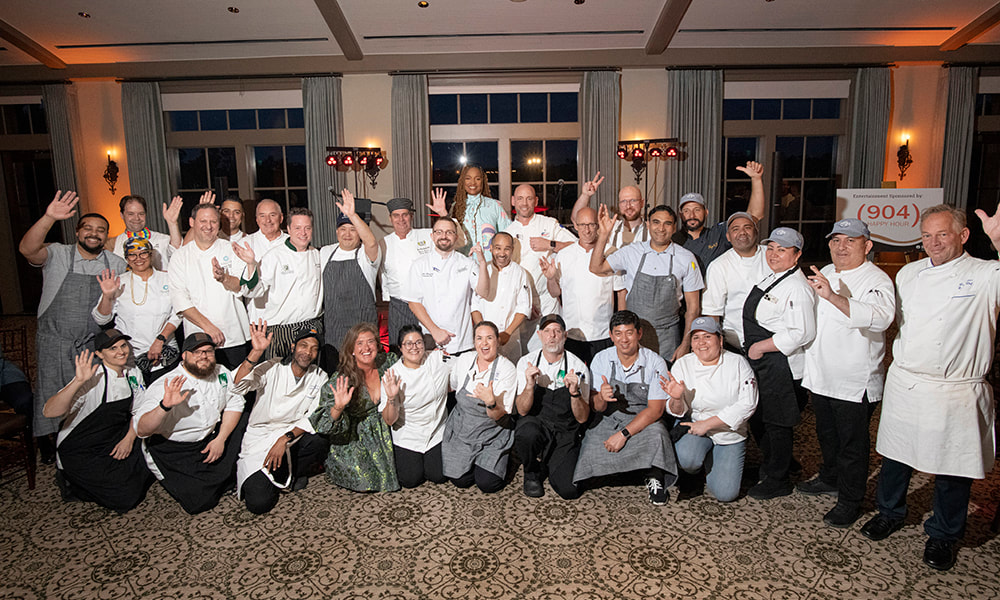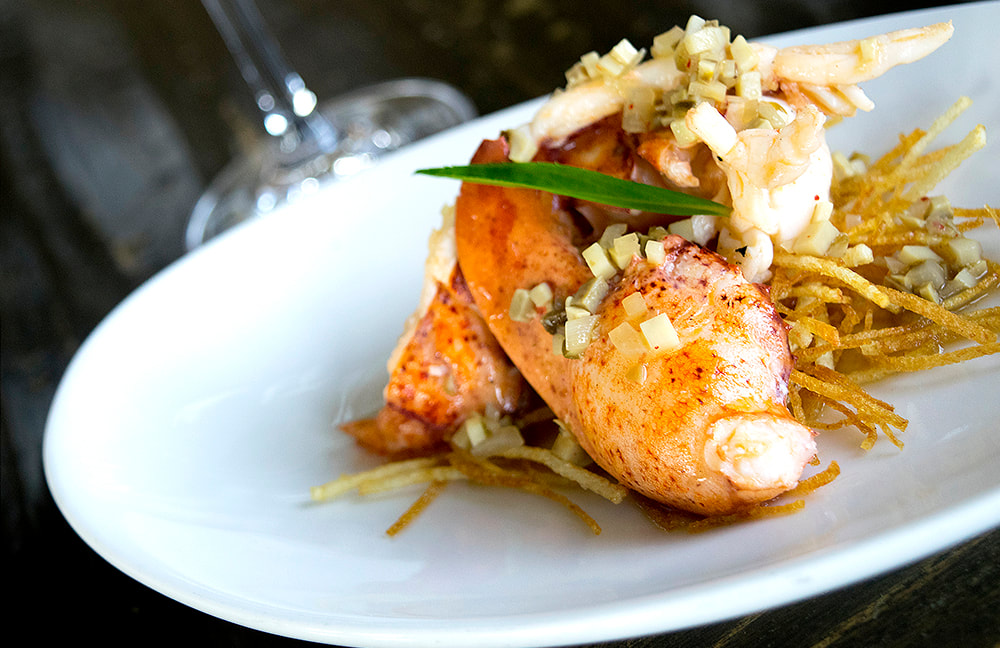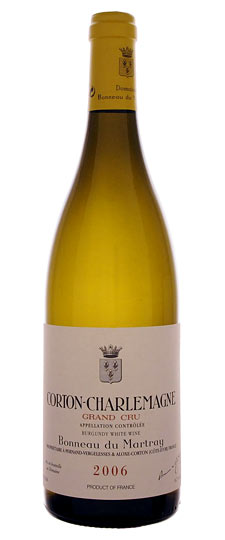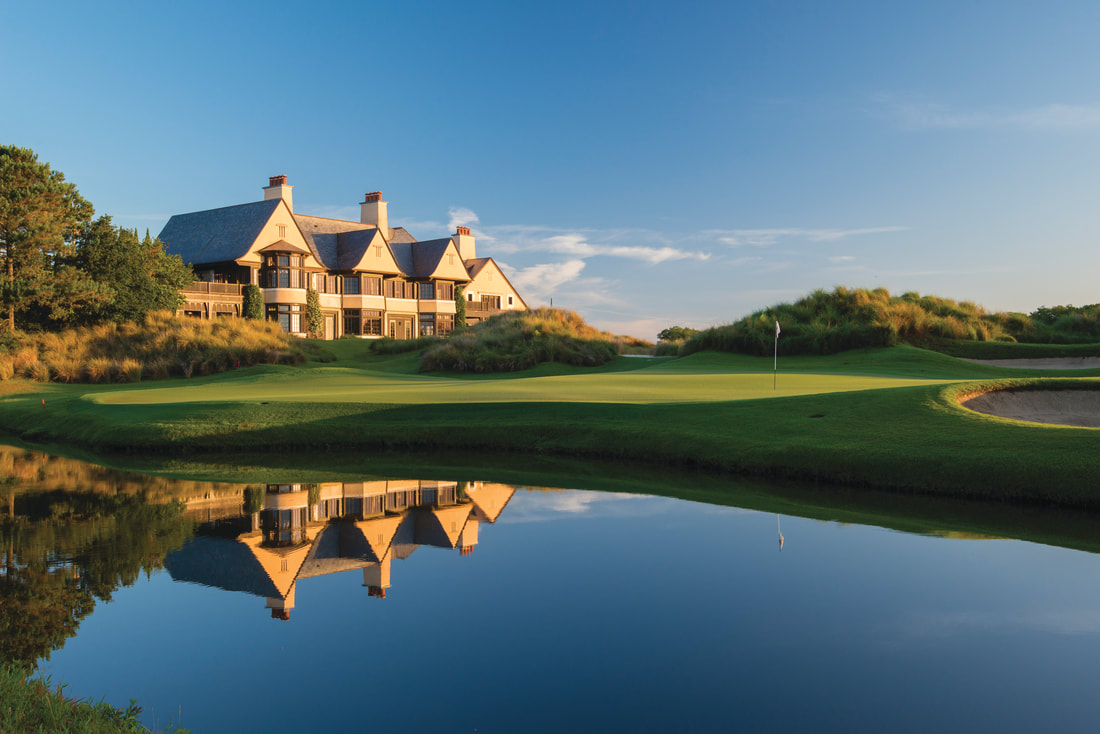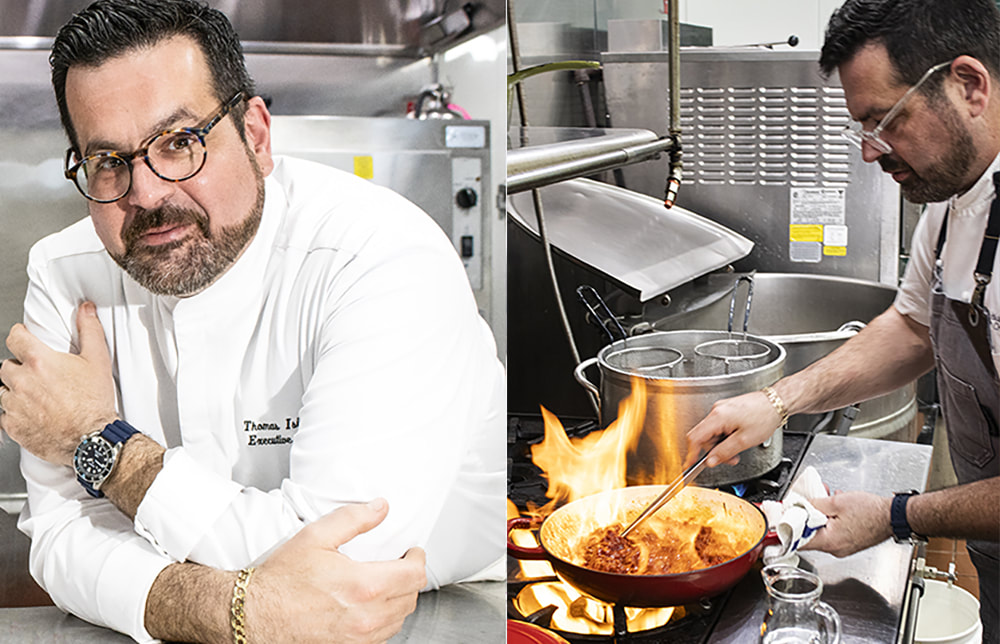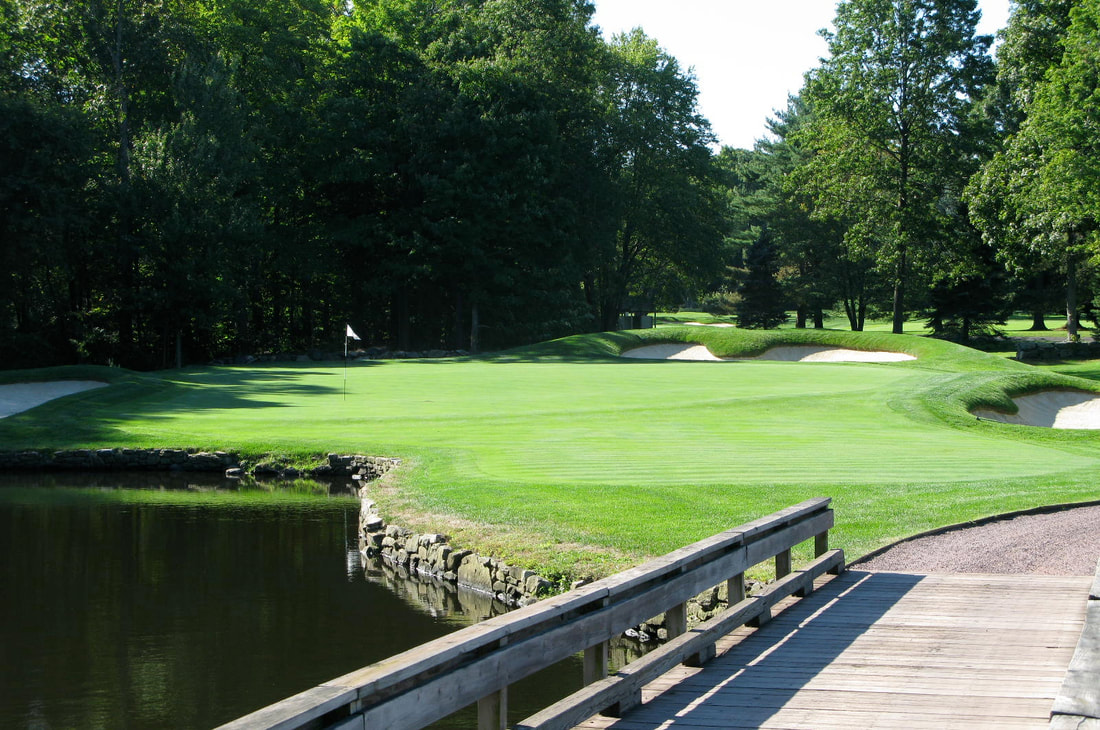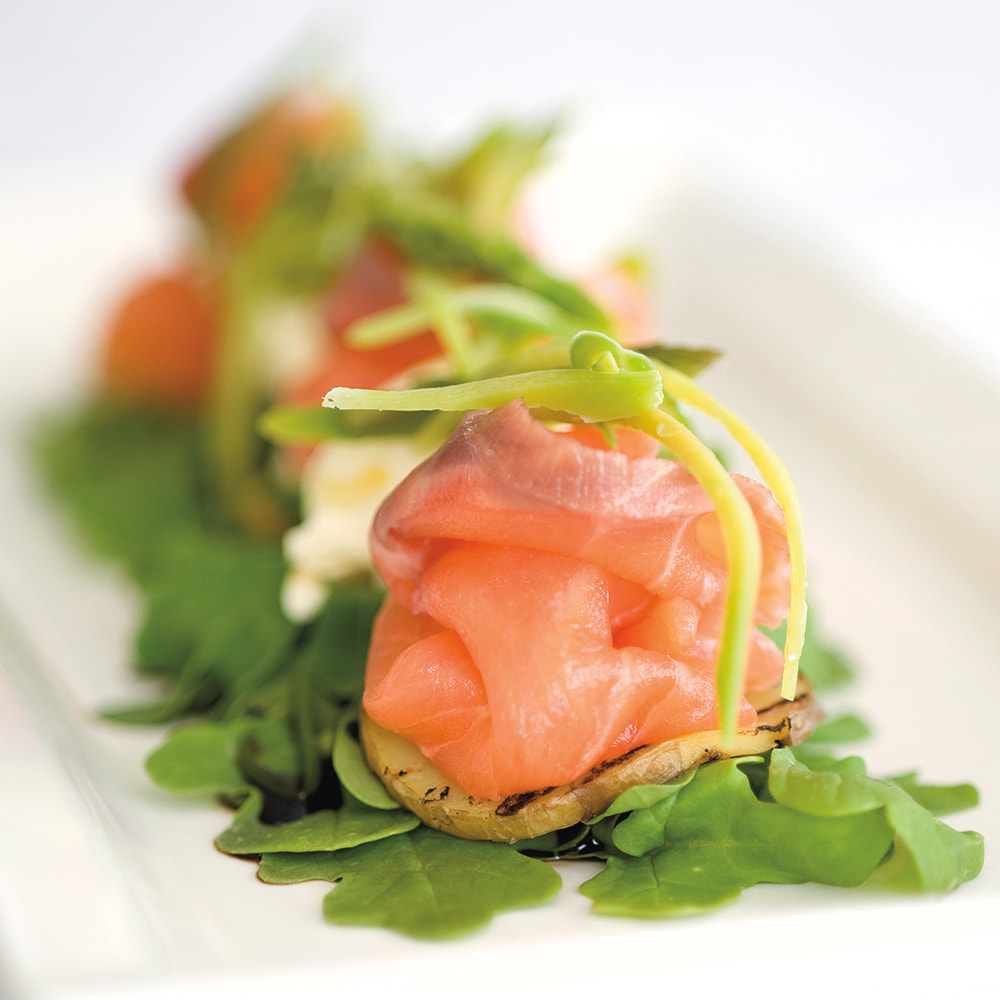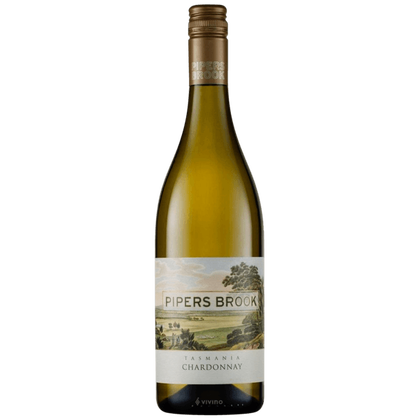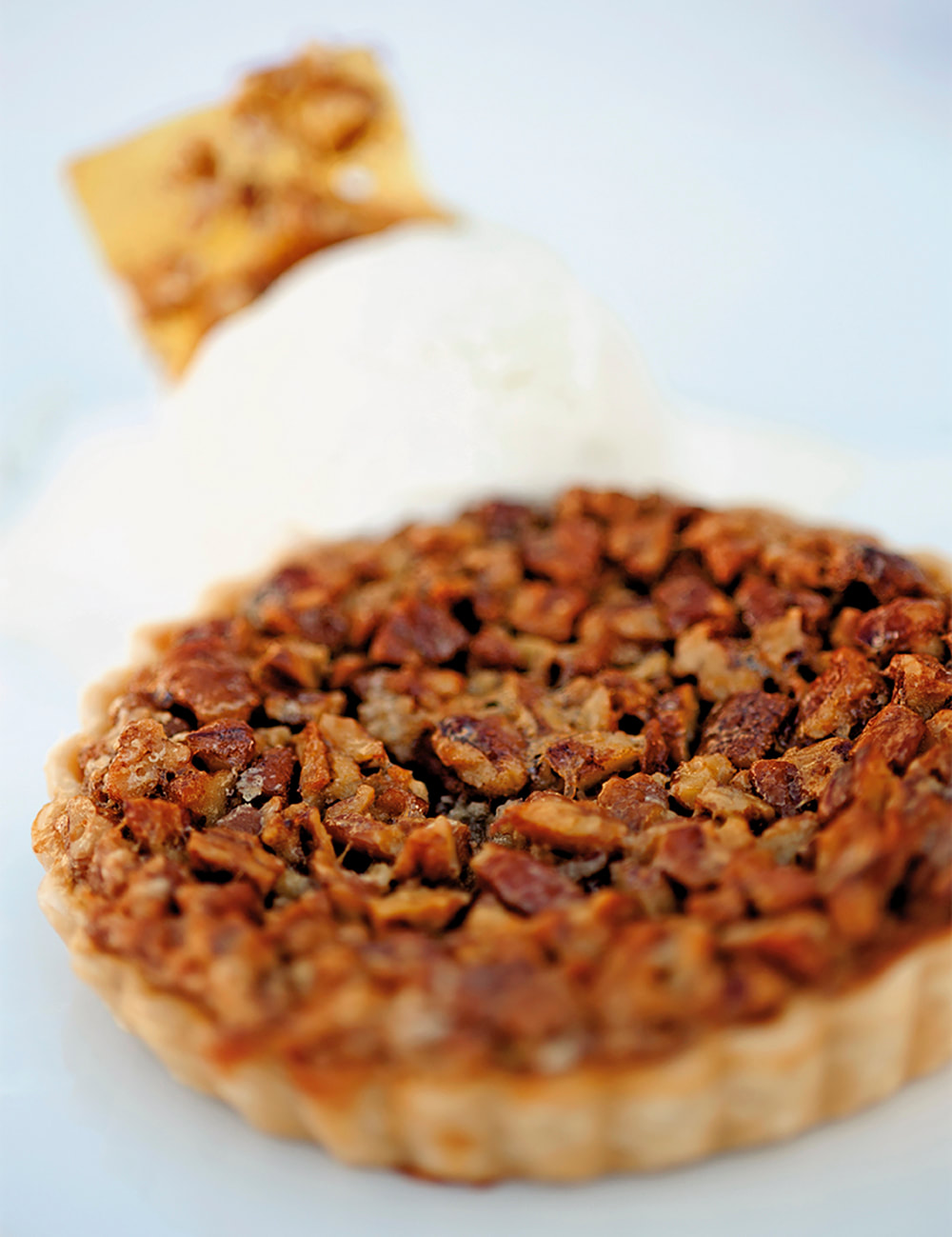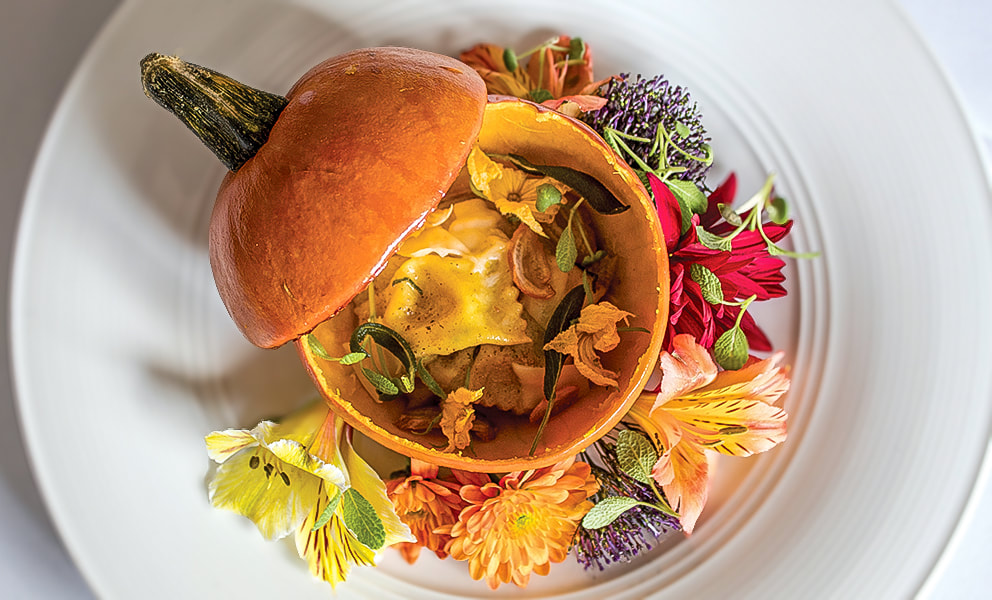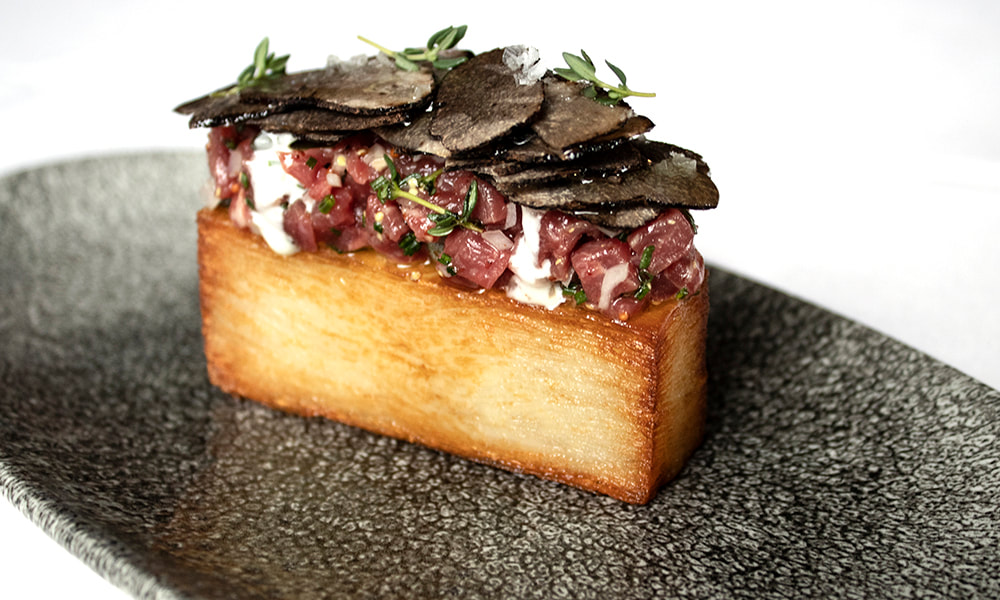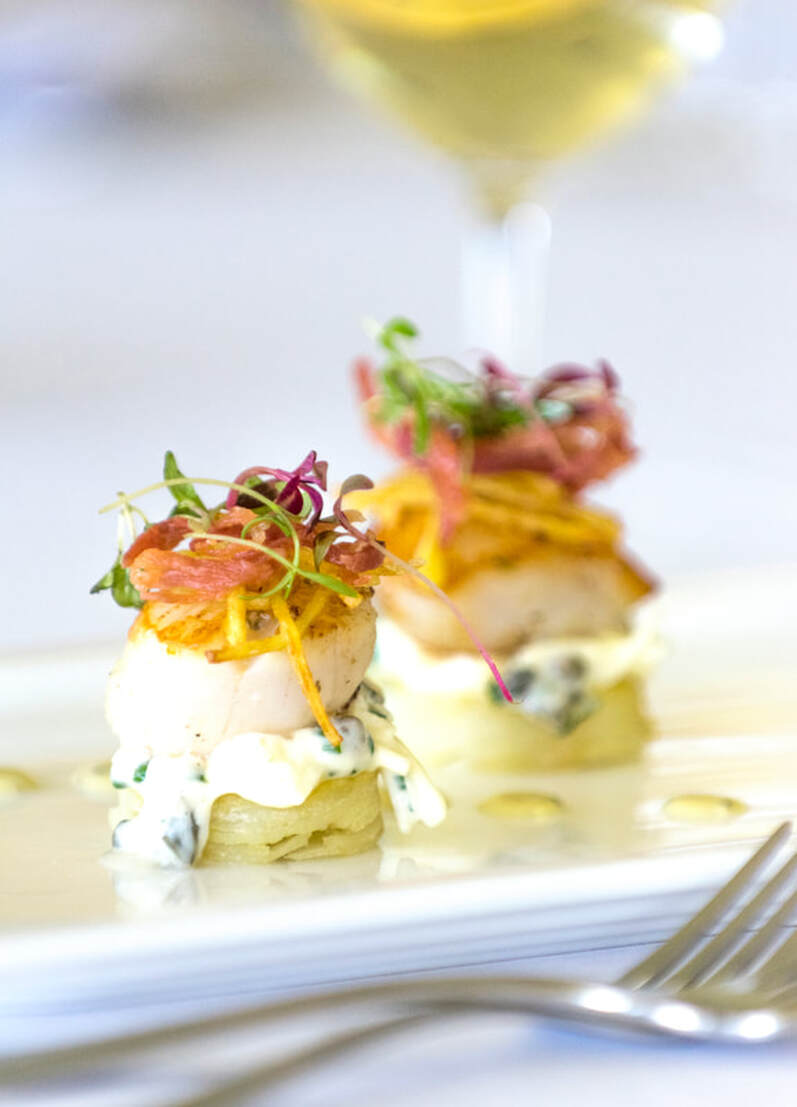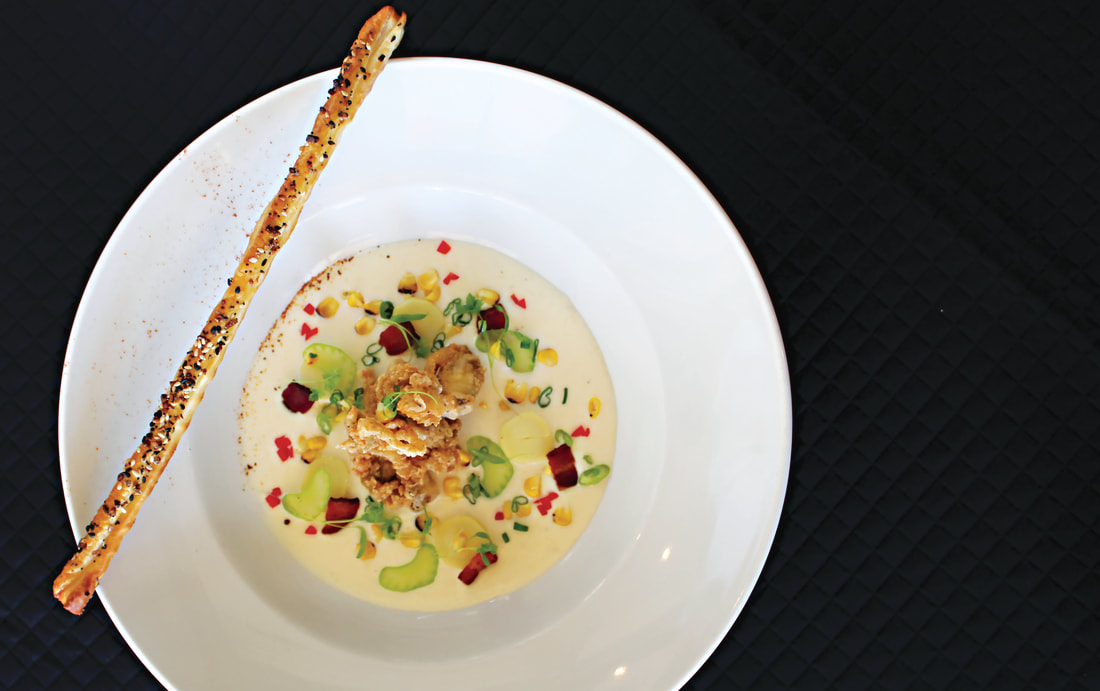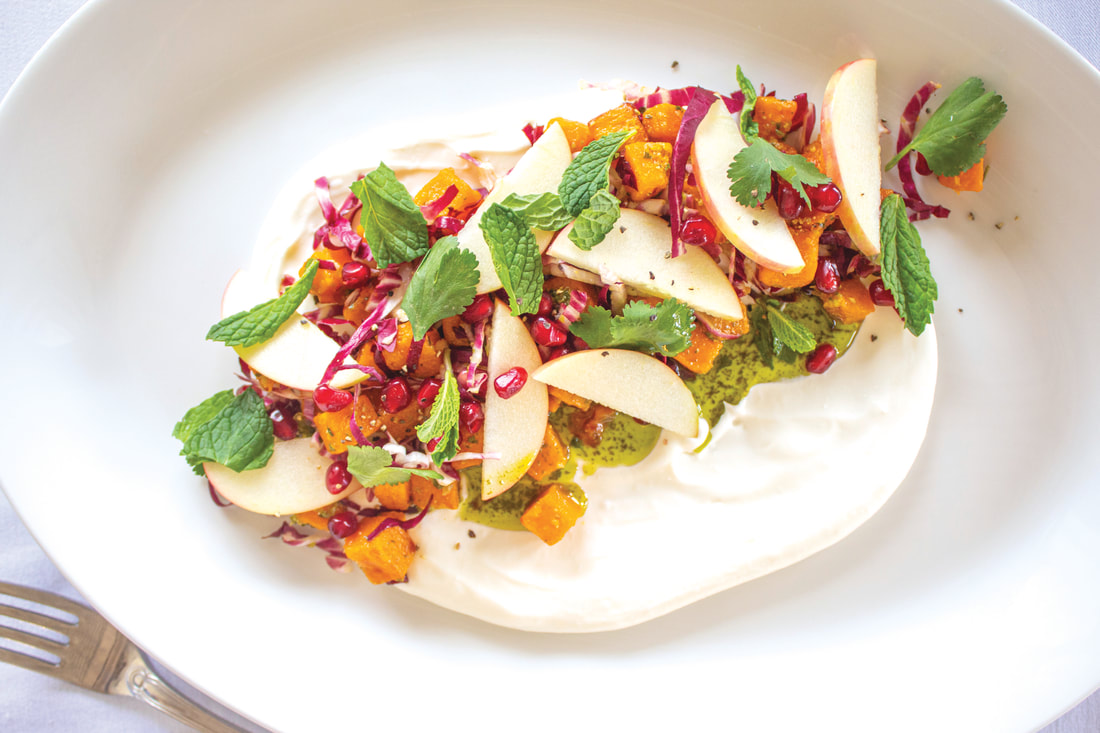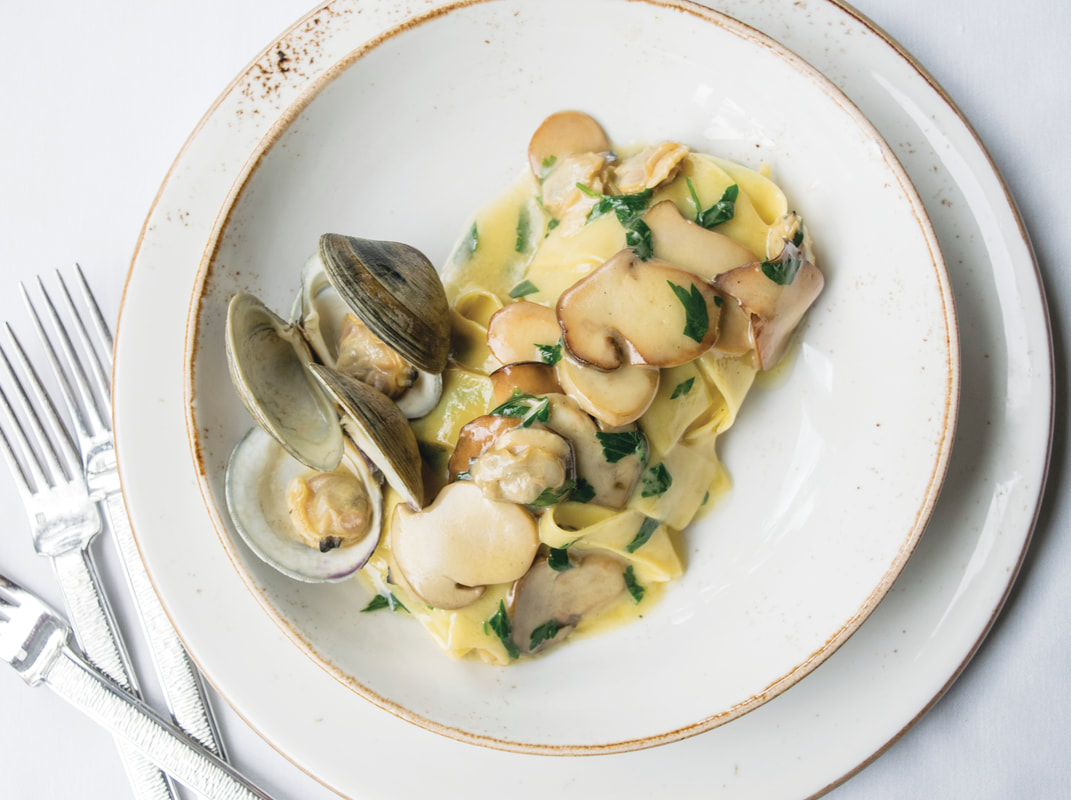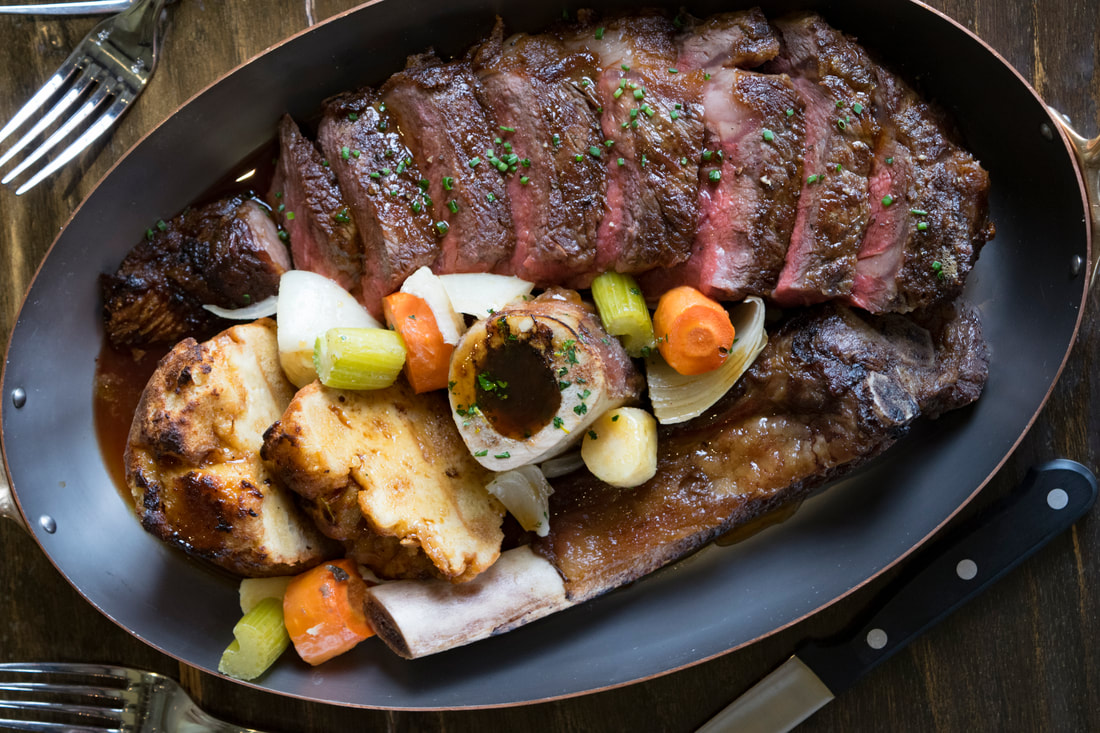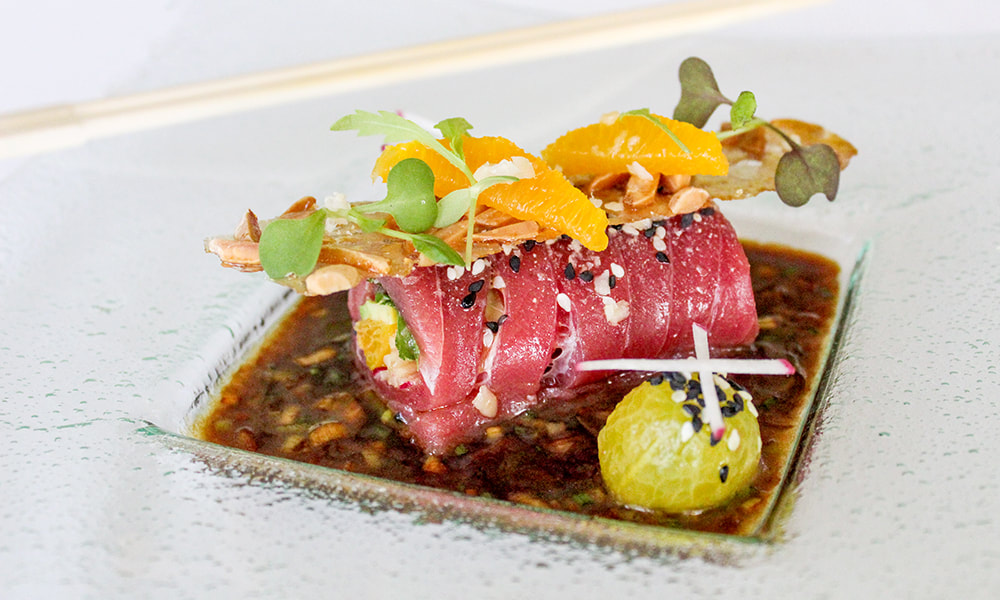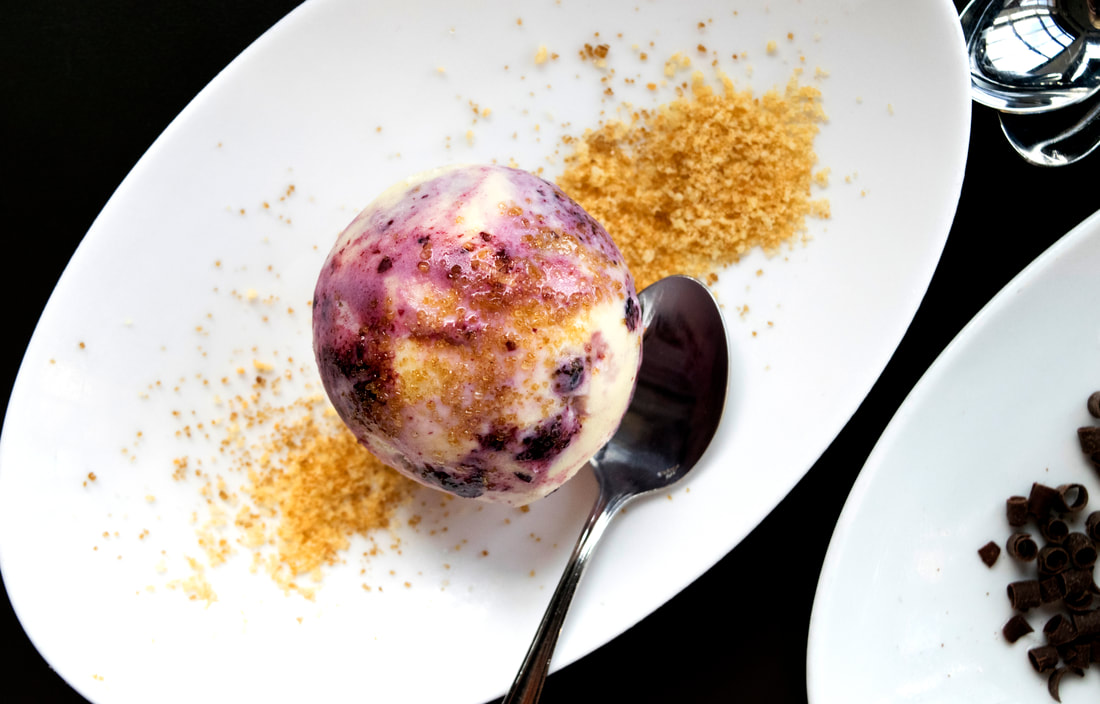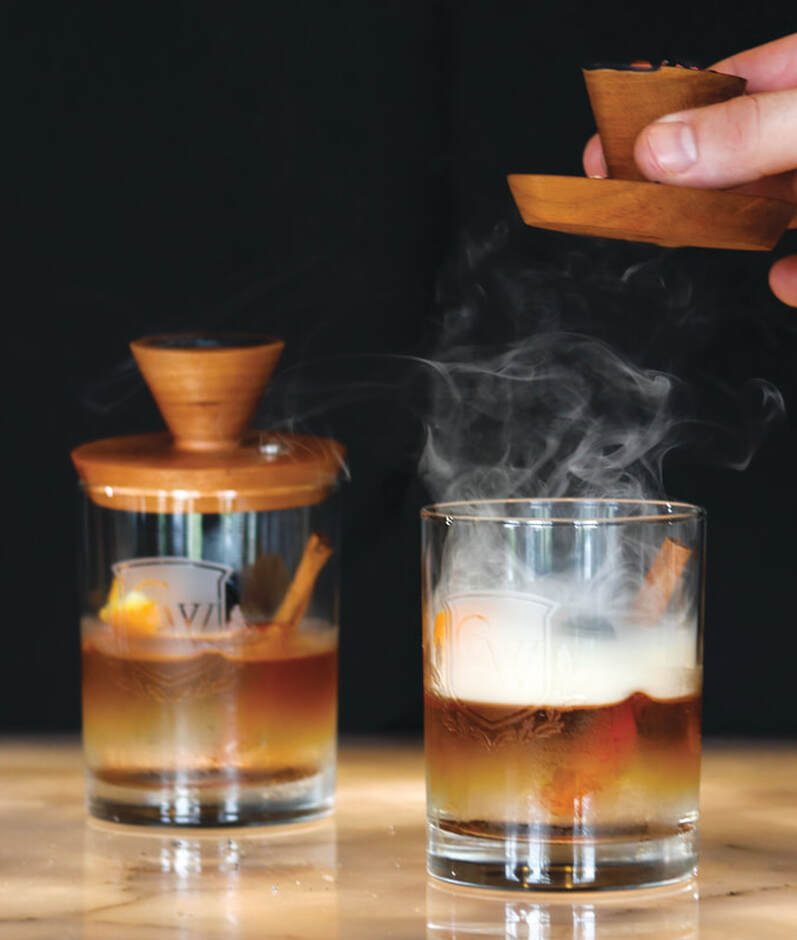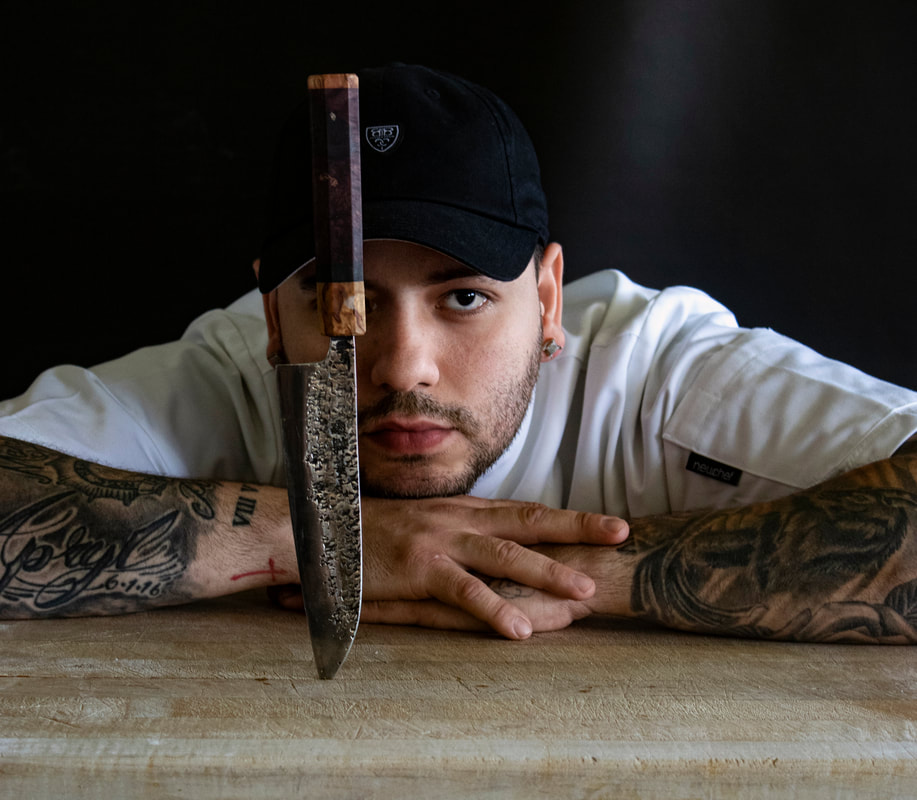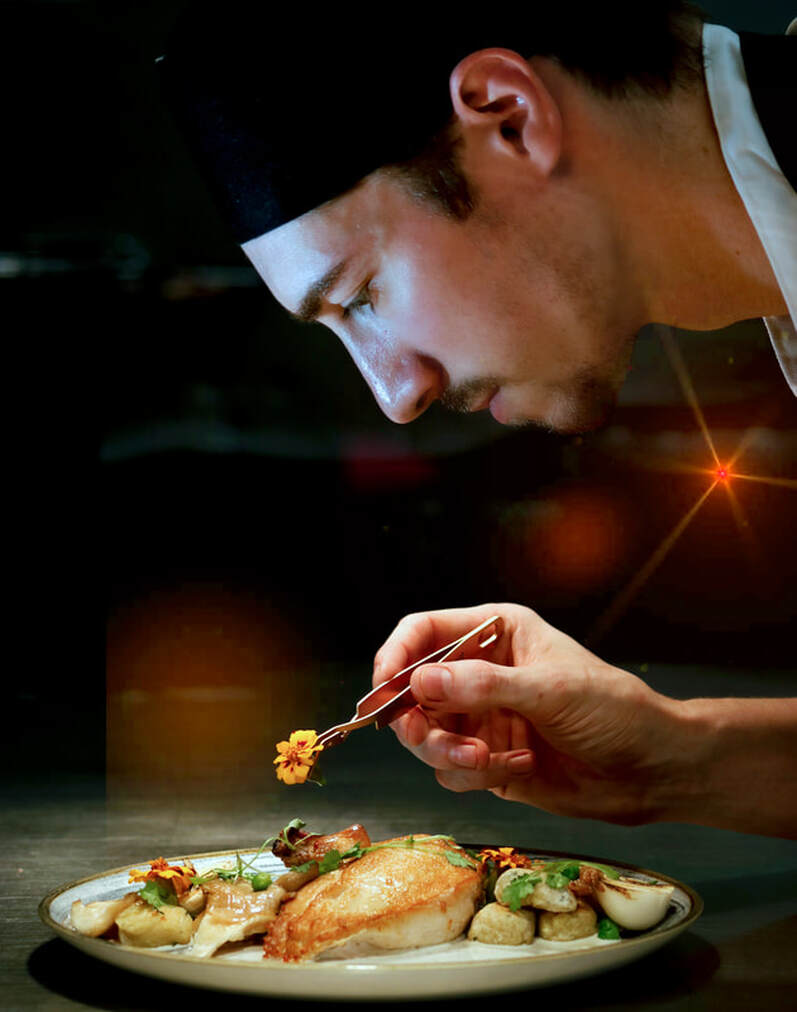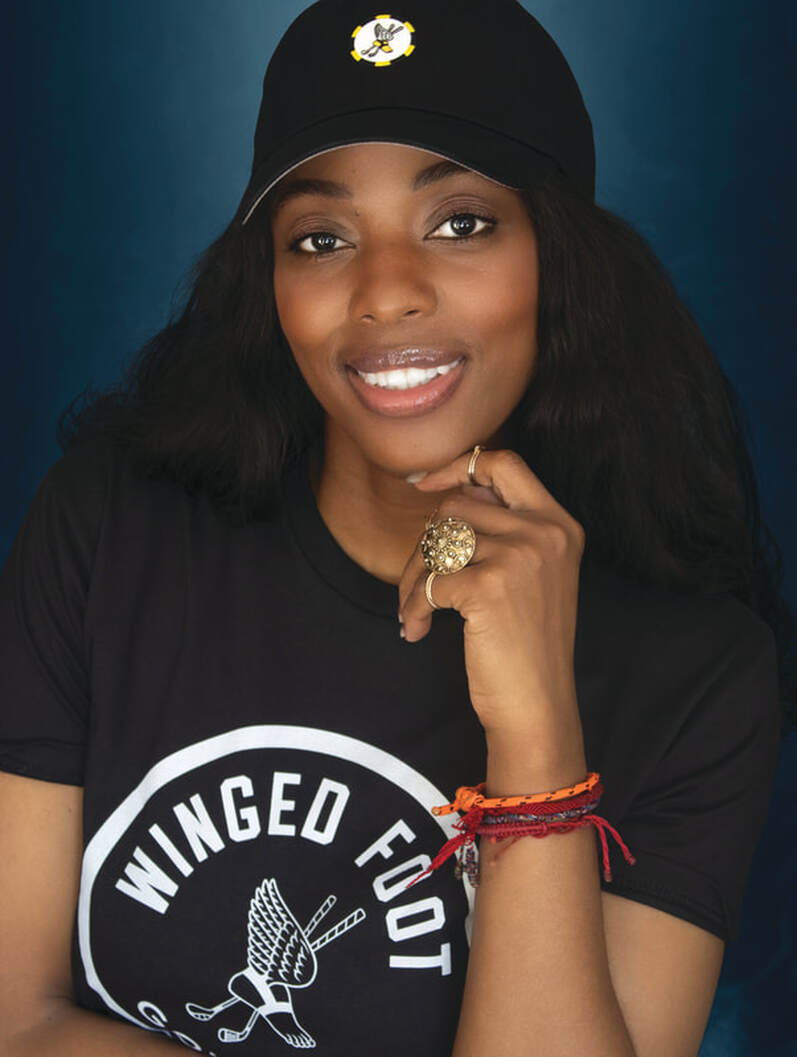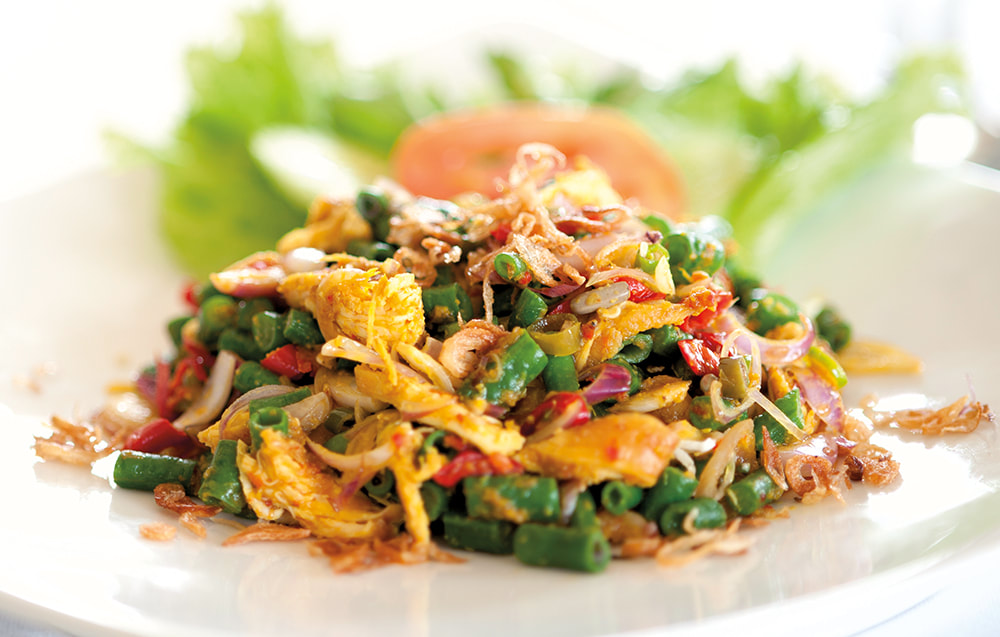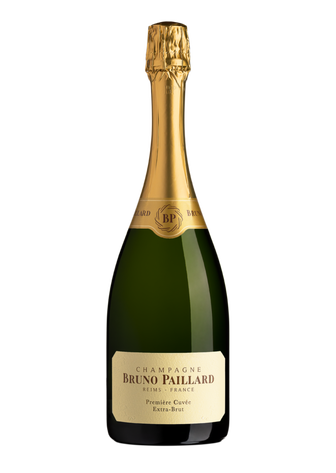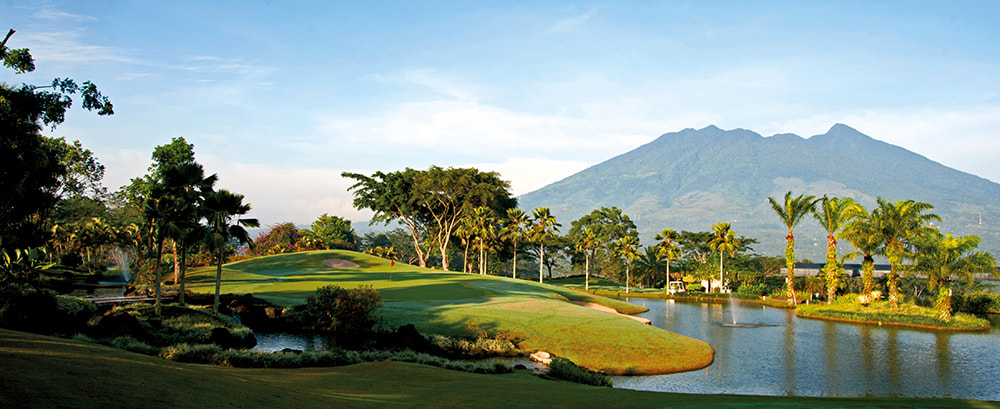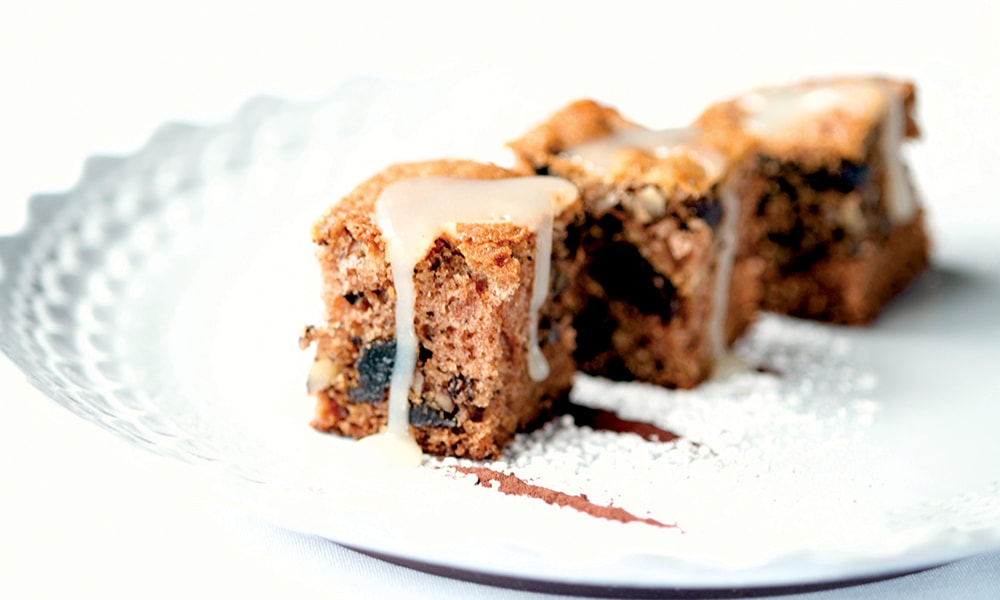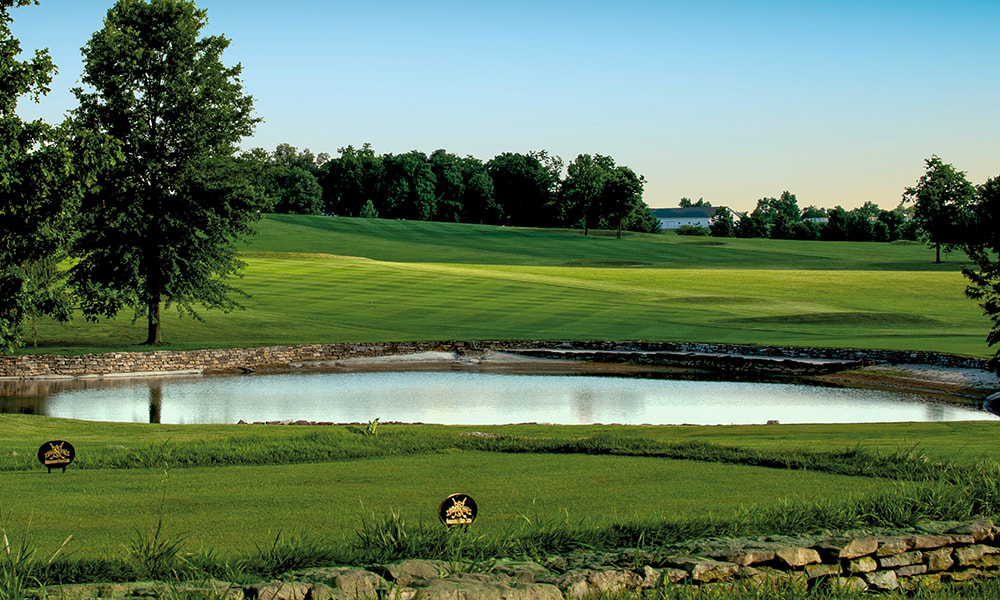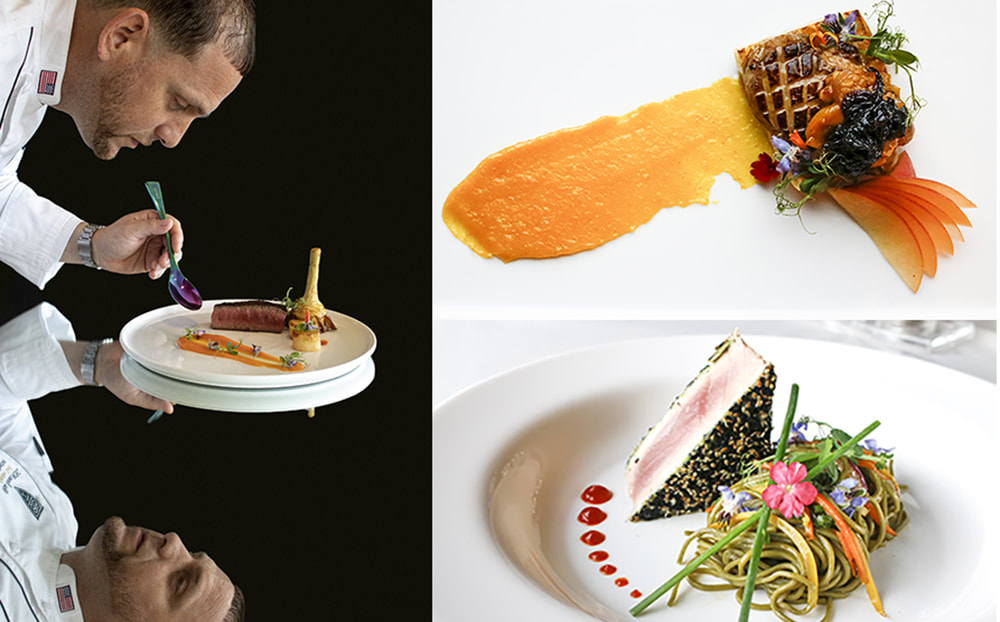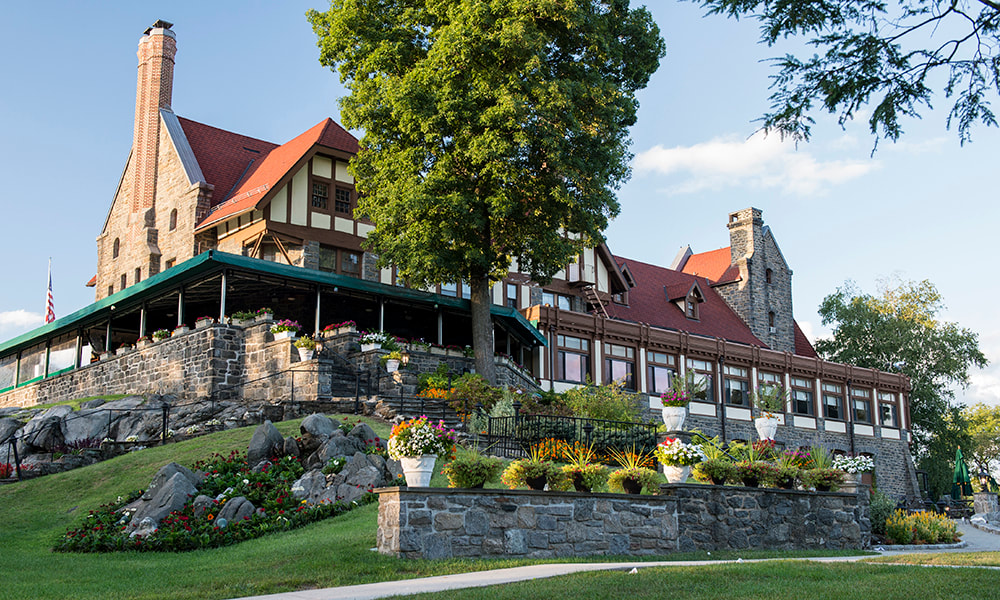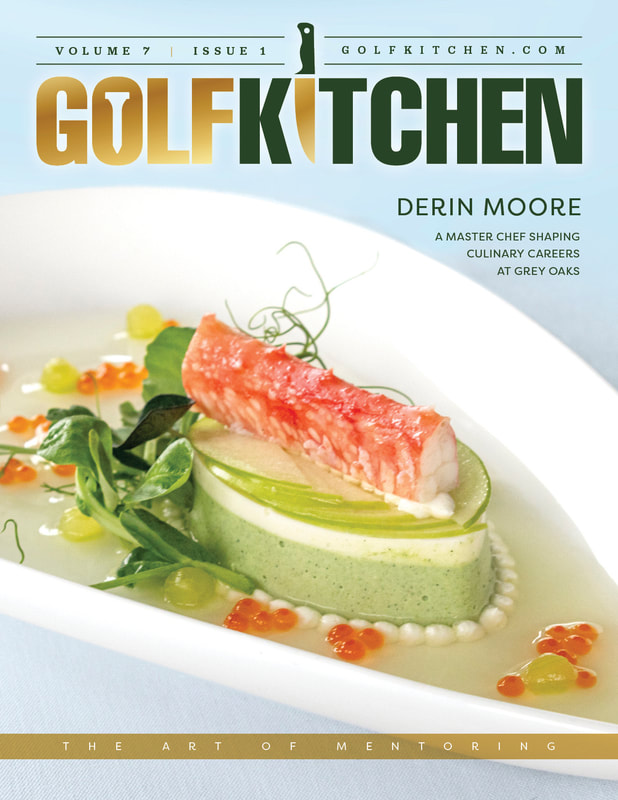|
The Taste of Golf 2023 team celebrate. Image by Zach Thomas GK: How did you get involved with the First Tee’s Taste of Golf Event? VE: I started with the NGCRA (National Golf Course Restaurant Association) in February 2010. Coincidentally, I had attended the first event at Epping Forrest Yacht Club in 2009 as my mom helped start the First Tee during her time at the PGA Tour. When I was approached in 2012 by the First Tee Board Members to help with the Chef portion of the Taste of Golf, I had already developed a great relationship with the Club chef community and was eager to take this on. The future of golf is essential to the NGCRA and golf clubs—we need golfers to keep our industry alive. The First Tee is dedicated to keeping golf accessible to children. As chef liaison, a task I undertook starting in 2011, I am responsible for finding product donations, the menu, biographies, and headshots. The Taste of Golf held its inaugural chef competition in 2012 with the theme “Street Food Around the World.” Chefs randomly drew the country they would represent and the protein they would prepare. Pastry Chef Nils Rowland of Ponte Vedra Inn & Club won with his single chocolate Banana Curry Truffle. Out of all the fantastic street food-themed dishes, this little chocolate nugget beat out some crazy, unique dishes. GK: How did the event come to be at TPC Sawgrass? VE: A larger venue was needed for the event to expand. Since TPC Sawgrass was already involved with the First Tee, it was a natural fit. Additionally, we were able to offer stay and play packages at the Marriott Sawgrass and the Stadium Course. The First Tee and raising money for children are essential to this mission, and we continued to grow the event in the ensuing years. When the Pandemic hit, we all wanted to keep it going so we tapped into a creative idea to accomplish our goals during lockdown while keeping chefs and guest safe: the mystery basket. I developed a mystery basket of ingredients (Smithfield Pork Tenderloin, black garlic, peaches, a vanilla bean, black sesame seeds, fenugreek, mustard seed, orange powder, and Aleppo pepper) and delivered to each participating chef. Each had ten minutes to unpack ingredients and devise a plan to seven of the nine ingredients, with bonus points for using more. Chefs were given an hour to cook and record their cooking process. At the end of the allotted time, each chef was required to text a photo of the completed dish and then, upload a video of their preparation process. While it may not have been a perfect process, we had a lot of laughs and fun. Four outstanding chefs were selected based on the video submissions. Despite the lockdown, everyone was excited by this opportunity and the First Tee Facebook Live announcement was well received. Chef Erik Osol of the Ponte Vedra Inn and Club came in 1st place, and Chef Lewis Walker from Timuquana Country Club came in 2nd. The judges were Chef Jason Hall, CMC, Chef Jason Valerio, Chef Sam Brod, and Chef Gerald Ford, CMC. In 2021, since we were not entirely out of lockdown, we held a culinary contest to complement the golf tournament, tapping into a totally Southern concept, Pimento Cheese. There were very few criteria, only that Pimento Cheese had to be an ingredient in the recipe. The results and creativity were out of this world from a simple Pimento Cheese Spread with housemade kimchi and focaccia toasts to Lobster Ravioli! GK: Tell us about this year’s event. VE: The 2023 theme was The Greatest Showman/ Upscale Circus. We had been through so many restrictions, that we were craving a festive, carnival atmosphere. Each dish had to be a few bites in a disposable dish that didn’t require more than a fork or a spoon to eat while standing. The clubs embraced this criteria and it resulted in another spectacular evening! This year there were three award categories: Chefs’ Choice (all competing chefs voted on dishes created by their peers, Judges’ Choice (a blind tasting of all the dishes) and Best Decorated Table. Michael Meuse of Sawgrass Country Club won both food awards, while Executive Chef Joe Gianzero of Jacksonville Golf and Country Club impressed with his themed table decor. GK: Tell us your plans for the Taste of Golf in the next few years. VE: I would love to hold more of these tasting events. While planning and running a special event of this magnitude is not an easy task, hearing the buzz from the attendees and their excitement over the excellent food quality makes it all worthwhile, as does of course, supporting such a worthy cause. And, seeing the anticipation surrounding the trophy ceremony really provides a great forum to the chefs to be judged by the attendees and their fellow culinarians. Executive Chef Matt Voskuil, Nineteen at TPC Sawgrass, Foie Gras Mousse with Strawberry, Brioche, Almond. Executive Chef Lance Cook, Hammock Dunes Club, Cheese Ale Soup, Carnival Pretzel Croutons, Club Made Worcestershire Powder Mexican Street Corn Blend with Chipotle Agave Pork Belly, Cilantro Creme and Lime Juice Pipette. Executive Chef Michael Meuse, Sawgrass Country Club, Thai Cashew and Sriracha Donut with Poke Tuna Crunch with Masago, Radish Sprouts, Cucumber and Scallions. Executive Chef Joe Gianzero, Jacksonville Golf & Country Club, Walking Taco with Braised Short Rib Cotija Cheese, and pickled onion. Executive Chef Alexander Sapp, St. Johns Golf & Country Club, Roasted Chicken Leg & Duck Confit with Funnel Cake Bread Pudding, Kettle Corn Lace Cookies and Cotton Candy Cake Truffles. Chef Director Eric Butcher, PGA Tour, Global Home, Lamb Shawarma with Fresh Pita, Tabboulleh, Labneh, Pickled Vegetables Sesame and Aleppo Caramel Corn. Executive Chef Darek Stennes, The River Club and Executive Chef Tim Turner, Epping Forest Yacht & Country Club, Cheerwine Char Sui Pork Bao Buns with Kimchi Popcorn. Executive Chef Tiago Joaquim, World Golf Village, Porcini Dusted Shrimp Arepas with Truffle Aioli, Mayport Shrimp, Handmade Corn Flour Arepas, Mushroom and Asparagus Duxelle and Charred Corn. Executive Chef Cameron Walton, The Lodge & Club & Executive Sous Chef Xavier Santiago, Ponte Vedra Inn & Club, Gaucho Style Wagyu Short Ribs with Feijoada, Roasted Garlic Rice and Pickled Onion Herb Sauce. More than Golf, First tee saves livesThe Taste of Golf serves as a major fundraiser for the North Florida chapter of First Tee, a youth development organization that enables kids to build the strength of character that empowers them through a lifetime of new challenges. By seamlessly integrating the game of golf with a life skills curriculum, active learning experiences are created that build inner strength, self-confidence, and resilience that kids can carry to everything they do. For the past 18 years, the National Golf Course Restaurant Association (NGCRA) and this chapter of First Tee, which serves seven counties in Northern Florida, have worked side-by-side to produce The Taste of Golf, from which 100% of the proceeds benefits the charity. Since inception, the event has raised over $1 million for First Tee. According to First Tee Executive Director Jeff Willoughby, his team manages all aspects of the event, extending invitations to clubs, their general managers, and chefs, as well as selling sponsorships. Computacenter & Cisco Systems are the title sponsor. The NGCRA manages the culinary details of the evening, from setting menus, interfacing with the chefs, and coordinating the judging. Months of preparation and countless hours of hard work happen behind the scenes to make this event incredible. Held in the beautiful TPC Sawgrass Clubhouse, the second floor is transformed into a roaming feast, as guests move from room to room, visiting chef’s stations, sampling small bites, and mingling with friends. A friendly competition among guests selects the Taste of Golf winner, whose club receives and holds the perpetual trophy for a year. The Chefs’ Choice Award is voted on by the chefs. First Tee program participants act as greeters and take in all the action and excitement. According to Willoughby, while golf is integral to the First Tee program, the number one goal is for participants to graduate from their respective high schools and to learn the importance of giving back to their local communities. “Our kids and teens are facing challenges unseen by previous generations,” Willoughby explained. “Many lack access to safe opportunities that foster a culture of acceptance and provide mentorship. They live in a world where social pressures are always on, calm and confidence are hard to access,With its programming and partner facilities, First Tee provides a place for kids to gather and learn. A recent capital campaign raised funds for the Jacksonville Beach First Tee Learning Center, a new indoor facility at Jacksonville Beach Golf Club. The programs offered by First Tee enable kids to build the strength of character that empowers them through a lifetime of new challenges. By seamlessly integrating the game of golf with life skills curriculum, learning experiences are created that build inner strength, self-confidence, and resilience that kids carry to everything they do. With the belief that all kids deserve the chance to grow in a supportive environment with mentors guiding them, First Tee is dedicated to building programs that are accessible, welcoming, and as impactful as they are fun. to influence the lives of youth in North Florida. The passion and care of people like those who supported and attended The Taste of Golf are instrumental in allowing First Tee to continue to IMPACT, INFLUENCE and INSPIRE the youth in North Florida. ~by Karen Moraghan Contact details: Jeff Willoughby | Executive Director First Tee - North Florida 101 E Town Pl, Suite 100, St. Augustine, FL 32092 Office: 904-810-2231 | Direct: 904-586-4836. Cell: 954/254-6075 jeff@firstteenorthflorida.org | www.firstteenorthflorida.org Tory Eulenfeld National Director of Member Services and Programs The NGCRA 770-331-8831 Tory@ngcra.com www.NGCRA.com
0 Comments
Recipe by Doug Blair, Executive Chef at Cassique at Kiawah Island Club, Johns Island, South Carolina, 2015 Serves: 2 Ingredients Lobster
Porcini Vinaigrette
Potato Straws
Preparation Lobster Separate the claws from the head, leaving the head and tail intact. Boil the claws for 5 minutes and the head and tail for 3 minutes, then chill in ice water. Remove the meat from the shell, and split the tail in half. In a medium hot sauté pan, add the grape seed oil. Season the lobster with salt and pepper and add to the pan, cooking on each side for 2 minutes. Add the bay leaves and butter, then baste for 1 minute. Remove the lobster from the pan and place on a paper towel. Porcini Vinaigrette Sweat the shallot and porcini mushroom together in the grapeseed oil until the shallot is translucent and chill. In a bowl, add all the ingredients and whisk thoroughly. Potato Straws With a Japanese mandolin, cut the potato lengthwise into ⅛-inch straws and store them in submerged water and store in water for a few hours or overnight. Heat the grape seed oil to 285°F in a 12-quart saucepan. Pat dry the potato straws on a paper towel thoroughly. Fry the straws until golden brown, and place on a paper towel to absorb excess oil. Season with salt and pepper. Assembly Place some potato straws on two plates and arrange the lobster on top. Drizzle the porcini vinaigrette on top of the lobster. Garnish with the bay leaves and serve. Wine Match Corton-Charlemagne Grand Cru, France, 2006 The Clubhouse at Cassique at Kiawah Island Club, image courtesy of Kiawah Island Club
Thomas Isidori, Executive Chef at Brae Burn Country Club, Purchase, New York, USA I first met Thomas Isidori when I visited Brae Burn Country Club in Purchase, New York for a food photography assignment. The vast clubhouse has two enormous kitchens and on this day there was a member/guest tournament being serviced by the catering team. In the second kitchen and dining areas, Chef Thomas and I had our own private set for preparing dishes and shooting the images that accompany this profile. For me, this was total bliss. Please enjoy learning about the life of this emotionally and intellectually curious chef.~ Diana DeLucia GK: Tell us where you grew up and when your interest in cooking emerged. TI: I was born in Yonkers, New York, and I am a third-generation chef in my family. My grandmother, Philomena aka Fanny, was a chef and owned a restaurant with my grandfather, Arthur, Villanova, on 47th Street in New York City. My father, Thomas Isidori Sr., owned a few restaurants in Westchester County, New York and Fairfield County, Connecticut. My uncles, Arthur and Donald also were chefs, and my “brother,” Joseph Isidori, is a successful Michelin star chef. Joe is my first cousin, but I call him my brother as we grew up together in the same three-family house. We are from divorced families, so we spent every Sunday cooking with our fathers—it was our quality, family time. When I was in high school, I discovered that I wanted to cook for a living. I was accepted to the Massachusetts Institute of Technology (MIT) and planned to study architecture as I loved design. From my perspective, there is little difference in designing a plate or a building, and I like the instant gratification and feedback in the culinary world. I switched paths and enrolled at the Culinary Institute of America (CIA) in Hyde Park, New York, graduating in 1994. During my internship year, I was assigned to work at the Waldorf Astoria in Manhattan, but the chef there had no recollection of having me assigned to him, nor did he have space for me either. So, I returned to the CIA to look for an alternative location and subsequently contacted Ardsley Country Club. Executive Chef Victor Boyd was sympathetic to my situation and told me, “You can start tomorrow!” I jumped on the train, began my country club career, stayed at Ardsley for four years, and have never left. From there, I worked for Kevin Sullivan, Executive Chef at Innis Arden Golf Club, Old Greenwich, Connecticut, for seven years. Victor taught me how to be organized and fast, and Kevin taught me all the ins and outs of being an executive chef, including the necessary computer skills. From his example, I learned how to delegate and how to be a better manager. These two guys were the biggest influences on my career. In 2001 I accepted my first executive chef position at the Stamford Yacht Club. For four years, I learned about high volume catering operation, which is significantly different from golf club culinary operations. At a yacht club, the money is on the water and invested in the owners’ boats. At golf clubs, members are invested in the club, the course, clubhouse, and other facilities. The models are very different. Golf and country clubs are where I wanted to work and when I landed the executive chef role at the Country Club of Fairfield, the sixth-finest links course in the United States, I stayed for over a decade. Two years ago, when I was offered the executive chef role at Brae Burn Country Club, a high-volume club where I could utilize and integrate all my experiences, I seized the opportunity. GK: How do you find the time to teach? TI: I have taught culinary classes at Norwalk Community College, Norwalk, Connecticut, for the last 15 years, including Food Introduction One, Cost Control and Production, Catering, and Event Management. My favorite class is International Cuisine, which I teach every Tuesday on my day off from the club. GK: You are a very kind chef who gives back to the community. Could you tell us about that? TI: I will do whatever I can for the community. When I was a member of the Club Chefs of Connecticut, we worked on the Stamford Hospital Foundation event for the kids every year. I was honored to oversee that event for four years, along with Jeff Perez, who is currently at Fairview Country Club. I live in Newtown, Connecticut and have a soft spot for this community, which reminds me of true America in the middle of this crazy world. In the town center is a massive flagpole where our patriotism is displayed each day. The community is open and kind, with very little crime. But as everyone knows, we had a life-altering tragedy in 2012 when a mass shooting took 26 lives, including 20 children who were only five and six years old. In the aftermath, I coordinated and prepared meals for all the services and funerals. I reached out to the community and fellow chefs. Between purveyors, chefs, students, and the Country Club of Fairfield (which gave me the week off to work on the community’s behalf), we produced over 14,000 meals for first responders, volunteers, and families. This was one of the proudest moments of my career. Chefs reached out to me from Texas, Arizona, and California, offering their assistance, including one chef who drove non-stop from Atlanta and worked 48 hours straight. He was so passionate about supporting these people in their time of need. The most emotional part for me was learning more about the children and what they wanted to be when they grew up. New York City sent three firetrucks to honor one of the little boys as he dreamed of being a fireman. They gave him a fireman’s burial. His small casket was on the back of a firetruck with firefighters and bagpipers lining the streets. It was the most heartfelt thing I have ever seen. It was the hardest thing I have ever done, but also the most rewarding. Each December 14 is a somber day for me. GK: Tell us about your interest in watches. TI: I have a large collection of Rolex, Panerai, and Omega watches. After the Newtown tragedy, I gave up my hunting rifle and started fixing and building watches, which occupies me in the off season. GK: Did you have any expectations when you started at Brae Burn Country Club? TI: When Brae Burn contacted me, the timing was great. As both a high volume and a Jewish club, I found there a membership that wanted an enhanced culinary program. Initially, I thought it would be much harder to turn this place around, but what they needed was an executive chef to provide direction. GK: Tell us how your team works with the membership. TI: My team has and shares their great ideas and through this collaborative environment, they’ve learned to trust me. Within six months, the club’s culinary program took off. Members were ecstatic. One day, I walked into my office and one member gifted me bottles of Tequila and Bourbon to thank us for the great meals and service. I can experiment and introduce cool concepts. I challenge myself whenever we activate stations in the dining room, which is great for my staff as they are having great fun being creative. I love bringing the kitchen into the dining room and interacting with the members and guests. It has been a great experience here. GK: You have two immaculate, large kitchens in the clubhouse, indicating a significant emphasis on food and beverage departments. TI: Well, you know what they say, golf is about the golf and then, there’s everything else. Here at Brae Burn, the food comes before anything else! GK: Being an Italian, tell us about your love of pasta and pizza. TI: Nothing is more exciting to me than a hot pizza right out of the oven, especially when it looks like lava: you get the crispiness of the crust, the cheese, and the sauce; it’s a complete pleasure food and yet so simple. I hope that one day Joe and I can venture together and open an amazing pizzeria. We make every kind of pasta in-house with my Sous Chefs Lucie, Spencer, and Javier, who has been with me for 17 years and 3 clubs now. The members love it. They enjoy seeing pizza made right in front of them and having us run an amazing pasta station with an array of fresh pasta. GK: Tell us about your team. TI: I truly believe we are a family and I know that I have some of the most incredible staff here at Brae Burn. And, I realize that my success here wouldn’t have happened without their hard work and dedication. Nobody is treated inferior. I want to know what they are thinking and what ideas they would like to try. The one empowerment I give line employees is input on menus. This provides some ownership and encourages them to be successful. An example, if a junior sous chef comes to me with an idea, I ask him how he plans to implement it, then I provide feedback. Recently, based on a team member’s suggestion, we created an oyster action station four ways in the buffet and it was a huge hit. I bought knife kits for each team member when I got here. Why do I give a chef’s knife kit to a dishwasher? As much as I personally hate doing dishes, it gives me so much pleasure to see an employee advance themselves whether it be moving up in my kitchen or leaving my kitchen for a higher position in another. I love seeing people grow and mature and become successful. I don’t want them to always be a dishwasher. The 8th hole at Brae Burn Country Club, Purchase, New York
Image courtesy Brae Burn Country Club Recipe by Penelope Sattler, Barnbougle Dunes Lost Farm, Bridport, Tasmania, Australia, 2012 Serves: 4-5
Ingredients
Preparation Boil the potatoes for 10 minutes until just cooked. Set aside to cool. Combine the balsamic vinegar and sugar in a small saucepan and reduce by half; set aside. Use a sharp knife to julienne (thinly slice) the asparagus, beans, and snow peas at an angle to create the greatest length. Put the sliced vegetables in a stainless steel bowl. Pour boiling water over greens and leave for 3 to 4 minutes. Refresh the vegetables in iced water. Thinly slice the potatoes from top to tail, creating different-sized circles. Sprinkle with coarse salt and olive oil, and grill until golden brown. Remove potatoes from the grill and rub with chopped herbs and pepper. Assembly To make an individual serving, arrange some rocket (arugula) down the middle of a rectangular plate. Scatter 4 or 5 pieces of potato on top of the rocket. Wrap the smoked salmon around your thumb and roll off to make a rosette. Place the salmon evenly down the center of the plate. Quenelle the crème frâiche and place between the salmon rosettes. Drizzle the balsamic reduction across the plate. Place some of the mixed vegetables on top of the salmon rosettes. Garnish with a wedge of lemon or lime. Wine Match 2008 Pipers Brook Vineyard Estate Chardonnay In 2012, I was introduced to Deb and Rich Peterson, who managed Justin Timberlake's businesses, including Mirimichi, a public golf course in Millington, Tennessee, while producing Golf Club World, Behind the Gates (published 2013, sold out). Deb, Rich, and the Mirimichi team played a significant role in the success of the book and helped the author connect with other industry professionals who were featured in the project. One of the most inspiring stories in the author's golf and country club portfolio was about Mirimichi's 22-year-old Food and Beverage Director, Mikki Carver, who had a great way of styling the recipes from Timberlake's Granny Sadie. I feel honored and privileged to have learned about the property and its history through this project. As Thanksgiving is fast approaching, I would like to share Granny Sadie's Pecan Pie recipe with you. Enjoy!" ~ Diana DeLucia Yield: 1 pie Ingredients
Preparation Preheat oven to 375°F. Combine the eggs, sugar, salt, flour, and butter in a medium bowl. Whisk ingredients until the mixture becomes light in color. Add the vanilla, corn syrup, and chopped pecans. Stir with a rubber spatula until combined. Pour into a baked and cooled pie crust and bake in the oven for 30 minutes. Chef Note: The pie is done when completely puffed across the top, and the pecans have formed a nice, crispy crust. Beverage Match Jack Daniels Whiskey *Recipe courtesy of Granny Sadie, Memphis, Tennessee
DUCK CONFIT AGNOLOTTI, WITH WITH ROASTED PUMPKIN, SMOKED CHESTNUTS, RICOTTA AND SAGE BROWN BUTTER10/28/2023 Recipe by Matt O'Connor, Culinary Director/ Executive Chef at Wee Burn Country Club, Darien, Connecticut, USA Ingredients
Duck Confit (Yields 50 Small Agnolotti) • 4 Duck Legs (raw, skin on) • 2 Tablespoons Kosher Salt • 2 Lemons (zested) • 6 Garlic Cloves (crushed) • 2 Tablespoons Allspice Berries • 2 Tablespoons Juniper Berries • 4 Thyme Sprigs • 4 cups Rendered Duck Fat Pasta Dough (Yields 1 Pound of Pasta Dough) • 4 Whole Eggs (large) • 4 Egg Yolks • 4 cups Caputo “OO” Flour • 1 teaspoon Kosher Salt • 1 Tablespoon Extra Virgin Olive Oil • Water as Needed • Extra Flour for Rolling Agnolotti Filling (Yields Enough for 50 Small Agnolotti) • 1 ½ cups Whole Milk Ricotta Cheese • 2 Egg Yolks • 1 Orange (zested) • 1 Lemon (zested) • 1 pound Duck Confit Meat (removed from bone and shredded) • 1 Tablespoon Fresh Parsley (minced) • Salt and Pepper (to taste) Smoked Chestnuts • 5 Chestnuts (deshelled and roasted) • Wood Chips • Sea Salt Roasted Mini Pumpkins • 10 Mini Pumpkins • 3 Tablespoons Extra Virgin Olive Oil • 1 Tablespoon Sea Salt • 1 teaspoon Ground Cinnamon • 1 teaspoon Sugar Saged Brown Butter • ½ cup Unsalted Butter • 2 Tablespoon Fresh Sage (minced) Garnish • Crispy Sage Leaves (deep-fried for 20 seconds and season with salt and pepper) • Shaved Parmigiana Reggiano Cheese • Baby Pumpkin Blossoms Preparation Duck Confit Chef Note: Prepare the duck legs 24 hours before. Combine the salt, lemon zest, garlic cloves, allspice, juniper, and thyme in a bowl. Rub the spice blend over the duck legs, wrap tight, and marinate for 24 hours. Rinse the duck legs under cold water and pat dry with a paper towel. In a baking dish, submerge the duck legs in the rendered duck fat, cover with foil, and bake in a 200 °F oven for 6 to 7 hours. Cool the duck legs in their fat, and once cold, remove the meat from the bones and chop finely. Set aside. Pasta Dough Add all the ingredients into a Kitchen Aid mixing bowl and blend at medium speed with the dough hook attachment for 10 minutes. The dough should pull away from the sides of the bowl and be shiny when it is done mixing. Wrap the dough in plastic wrap and let it rest at room temperature for 1 hour before rolling it through the pasta machine. Agnolotti Filling Place all the ingredients into a food processor and thoroughly pulse until all the ingredients are combined. Put the mixture into a piping bag with ¼-inch hole cut at the bottom. Agnolotti Cut your Pasta dough into 4 pieces and run each piece through a pasta machine to make wide sheets. The pasta dough should be thin enough to see your fingers through it, but not translucent. Keep your dough covered and sheets covered at all times so that they do not dry out. Working with one pasta sheet at a time lay the sheet on a lightly floured work surface. Pipe a tube of the duck confit filling across the bottom of the pasta sheet, leaving a ¾ -inch border of pasta along with the left, right, and bottom edges. Pull the bottom edge of the pasta up and over the filling and press down to seal the edge of the dough to the pasta sheet, then seal the left and right ends of the dough. Press to make sure there are no air pockets To shape the agnolotti starting at one end pinch the filling in 1-inch increments leaving about ¾-inch of pinched dough in between filling pockets. Run a crimped pastry wheel or pizza dough cutter along the top edge of the folded over dough, separating the filled strip of pockets from the rest of the pasta sheet. Now separate the agnolotti by cutting through the center of each pinched strip with your pastry cutter. Place the individual agnolotti on a baking sheet dusted with cornmeal, not touching each other. Continue this process with the remaining pasta dough; you should have 50 finished agnolotti once you have used all of the dough and filling. Chef Note: If you wrap these tightly they will keep overnight, or you can wrap and freeze them, and you can cook them frozen. Smoked Chestnuts Put some wood chips in the bottom of a 4-inch deep half-hotel pan and place directly on the flame of a stove. Cover. Once the smoke forms, put the chestnuts in a perforated half-hotel pan and place them in the smoker. Cover and let smoke for 5 minutes. Remove the chestnuts, season with sea salt, and grate the chestnuts with a micro plane. Reserve for serving. Roasted Mini Pumpkins Steam mini pumpkins for 30 minutes at 220 °F and allow to cool completely. Once cool, cut to the top of the pumpkin off, being careful to keep the stem intact, and scoop out the seeds and as much pumpkin as possible. Season the inside of the pumpkin with the salt and spices, drizzle with extra virgin olive oil, and bake the pumpkins for 10 minutes at 350 °F. Hold in a warm place for serving. Sage Browned Butter Get salted water boiling. In a large sauté pan, melt butter and allow the butter to turn a light brown color, but do not burn. Remove the pan from the heat. Drop agnolotti into the boiling salted water and cook for 3 minutes or until they float to the top. Strain the agnolotti in a colander and add them into the browned butter; gently toss them, add the fresh sage, and toss again. Place the roasted pumpkin on a small plate. Assembly Spoon 5 agnolotti into each pumpkin, sprinkle with the shaved smoked chestnuts, add some parmesan cheese shavings, spoon some extra browned butter over the agnolotti. Garnish with some fried sage leaves and pumpkin blossoms. Put the pumpkin lid on top and serve immediately. Prime Beef Tartare, Recipe by Derin Moore, CMC, Executive Chef / Director of Culinary Operations at Grey Oaks Country Club, Naples, Florida, USA Capturing moments in time through photographs has been a tradition passed down from generation to generation. Before that, stories were conveyed via artists’ paintings and drawings, including many of food. Why does a club need professional legacy-quality food and beverage images? Preserving the Club’s Culinary History Photography is an integral element of preserving a club’s culinary history. With the current generation of members often joining as social members, the club culinary scene is becoming even more relevant. Legacy, quality images chronicle a private club’s pride in its food and beverage, which has the potential of placing the club front and center ahead of its competition and in front of potential younger members seeking clubs to join. Many private clubs spend a fortune on the golf course and clubhouse photography and leave the food as an afterthought. Private clubs have come a long way in the last 15 years, and thanks to publications like Golf Kitchen and Club and Resort, strides have been made to give many opportunities to highlight the culinary talents in the club industry on a high level. A club should pay attention to and devote resources to its culinary marketing. Many chefs spend hours and days perfecting a recipe, its plating and design and then take a quick iPhone snap, completely ruining the image they wish to convey. Worse still, they post photos on social media for the world to see. Nothing is worse for a club or a chef than having unprofessional food images in member newsletters or to fulfill media requests. This certainly does not convey professionalism. In this age of storytelling, recipes and photographs have unique stories. My experience in the restaurant world and interacting with legends of cuisine, has taught me that preserving these stories and images creates a visual record and leaves a legacy for future generations of members. But remember, be prepared for your photoshoots as it all starts with what is on the plate. A Club Chefs Portfolio should be built as a Marketing Document. A strong resume and visual culinary portfolio are vital for any Private Club Chef as they highlight their kitchen skills, abilities, and creativity. The portfolio should comprise a well-presented written resume and a professionally photographed marketing document of images of relevant menu items that showcase the best of the best that the chef has to offer. Note: It is essential to be creative and not just stick to the standard items. Your professional food photographer can advise you ahead of your photoshoot and answer any questions. Menu designs and any awards or recognition that the chef has received can also be included in the portfolio. By presenting a portfolio, potential employers or clients get a glimpse into the chef's style, expertise, and experience, which can be crucial in securing a job or contract. It also helps chefs stand out in a highly competitive industry and demonstrates their commitment to their craft. Small Bites There’s something about small bites that are just so visually appealing, especially when plated with simplicity and elegance. I photographed this Pan Seared Port Lincoln Scallops recipe by Nigel Munzberg, Executive Chef at Royal Adelaide Golf Club, Seaton, South Australia, in 2015, and it’s stunning. It still looks as mouthwatering today as it did then. It’s incredible how a well-plated dish stands the test of time. Soups Soups are always satisfying and comforting, no matter what the occasion. Showcasing your best soups in photographs is a great way to entice members to return for more. A well-composed photo of a bowl of soup can make mouths water— this photograph of a New England Clam Chowder recipe by Michael Ruggiero, GlenArbor Golf Club, New York, is a fine example. Don’t forget the Salads! Salads may not always be the most exciting dish on the menu, but when crafted by a skilled chef, they can be a true work of art. If your club has access to a talented culinary team, don’t hesitate to showcase their impressive salad creations in your photography. Stunning visuals can truly elevate the perception of a salad. often-overlooked category. This Honey Crisp Butternut Squash recipe by Jonathan Hancock at Richland Country Club, Nashville, Tennesse, has been published internationally. Perfect Pasta Pasta is a favorite among golfers, members, and guests. Its a filling meal with many different styles that cater to all taste buds. This Pappardelle with Manilla Clams and Porcini was shot at Addison Reserve Country Club, Delray Beach, Florida, and was created 2017 by former Executive Chef Zach Bell. Don’t be afraid of Beef! Even with the rise of plant-based diets, many golfers still crave a good beef dish. However, it seems that capturing the perfect shot of these meaty creations can be quite a challenge. Believe it or not, this Brandt Beef Bone Marrow Bread Pudding recipe by Doug Blair at Cassique at Kiawah Island Club, South Carolina, took four hours to create and shoot! Asian Fusion Are your members passionate about Asian cuisine? If so, why not showcase this preference by creating visually stunning photographs of their favorite dishes? I shot this Tuna Sashimi with Avocado, Citrus, Almond Crunch and Tataki Sauce recipe by Scott Haegele at Royal Poinciana Golf Club, Naples, Florida in 2018. Dessert Delight There’s something about the sight of a decadent dessert that can make your mouth water with anticipation. Whether it’s the rich, creamy texture of a chocolate mousse or the flaky, buttery crust of a fruit tart, there’s no denying the power of a beautifully crafted dessert to create lasting memories. I photographed this Huckleberry Pie Gelato at Cassique at Kiawah Island Club, South Carolina. It looks like you can eat it right from the page. Clubhouse Cocktails In todays world, its crucial to present your bar’s best cocktails with high-quality photographs. With the current emphasis on creative concoctions at clubs across the country, having impeccable photography can make all the difference in attracting customers and standing out from the competition. This Campfire Old Fashioned was created by Junior Sous Chef Jeremy Bland at The Club at Carlton Woods, The Woodlands, Texas, and is an example of how some clubs are highlighting their bar offerings. Matt Marrero, Sous Chef, Bonnie Briar Country Club, Larchmont, New York Culinary Staff When holding a professional photo shoot at your club it’s important to include the entire culinary team—in the organizing and planning process. Editorial quality images may be used in media features, event promotions, newsletters, portfolios, social media posts, websites, and even resumes. Aaron Ruble, Executive Sous Chef at Sycamore Hills Golf Club, Fort Wayne, Indiana Chrissie Bennett, Executive Chef at Winged Foot Golf Club, Mamaroneck, New York
Recipe by Toto Sunarto, Executive Chef at Rancamaya Golf and Country Club, Bogor, Indonesia, 2012 Serves: 2-3 Ingredients Chicken
Curry Paste
Preparation Curry Paste Combine all the ingredients except the cooking oil in a blender or food processor and blend until smooth. Heat the oil in a pan, add the mixture, and stir for about 10 minutes or until fragrant. Chicken Heat the oil in a large wok. Stir fry the chicken in batches until golden brown. Return the chicken to the pan, add 1/2 cup curry paste, and stir for 2 minutes. Add the long beans, red chili, lemon juice, salt, and pepper, and cook until the beans are heated. Assembly Serve immediately on your desired tableware. Wine Match MV Bruno Paillard; Brut Premiere Cuvée The views of Mount Salak from Rancamaya make it a unique golf destination. The surrounding region is filled with street food and some great restaurants. My visit was in 2012, since then the property has undergone extensive renovations.
Recipe by Rick Dees, Entertainer, Producer and Owner, Sweetbrier Farm, Danville, Kentucky, USA Ingredients Cake
Bourbon Sauce
Preparation Cake Preheat oven to 325°F. and butter and line an 8-by-8-inch or 9-by-9-inch baking pan with parchment paper. Sift the flour, baking soda, salt, cinnamon, nutmeg, and allspice. Combine the vanilla, oil, melted butter, eggs, buttermilk, and sugar in a mixing bowl and beat well. Stir in dry ingredients, and fold in prunes and nuts. Bake for 45 to 55 minutes or until the center springs back when touched lightly in the center. Remove from the oven and let the cake cool for 10 minutes. Bourbon Sauce Chef Note: Make the bourbon sauce while the cake is baking. Mix together sugar, salt, buttermilk mixture, corn syrup, bourbon, butter and vanilla in a small saucepan and bring to a boil. Cook for 1 minute. Set aside. Assembly Invert the still-warm cake onto a serving platter. Spoon the sauce over the cake and let it soak in. Chef Note: Use all the sauce—dust with powdered sugar. Serve warm. Cut into 12 to 15 slices...and get outta the way!!!! # 2 tee, looking across the pond at a 245 yard par 3. Image: Diana DeLucia, 2012
Chris Reveron, Culinary Director and Executive Chef at Bonnie Briar Country Club, Larchmont, New York, USA Image top right: Pan -seared Foie Gras with Spiced Citrus Puree, Tomato and Peach Compote, Red Onion Jam and Brioche Toast. Image bottom right: Wasabi and Sesame Crusted Tuna with Green Tea Soba Noodles, Julienne Vegetables and Sesame Garlic. Images by Diana DeLucia I had always wanted to get to know Chris Reveron a little better. I met Chris in September 2019 at the second annual Golf Kitchen Culinary Excellence Awards at GlenArbor Golf Club, Bedford Hills, New York, just before the Pandemic. The more I learned about Chris, the more I wanted to know. I followed his LinkedIn account and quickly realized how he championed others before himself. Even when producing this profile, he insisted on including his kitchen family; he wanted them to share the experience. Chris is a veteran who did several years in Iraq and returned with the often-overlooked PTSD. I was intrigued by how Chris found his way into the culinary world and how his childhood and military experience led him to the industry. ~ Diana DeLucia
GK: Tell us a little about your childhood. I was born in Bridgeport, Connecticut. My mother is from Portugal, and my father is from Puerto Rico. Bridgeport is a crazy town to grow up in, and I survived the public school system. My parents were dealing with addiction issues, and I grew up quickly. I continually searched for a male figure to help me steer my ship. That person was my uncle from my father’s side, a Culinary Institute of America designated ProChef III. He was the sole reason I decided I wanted to become a chef at a very young age. He passed away in April 2020 due to Covid-19. He was one of the first 75 people in Connecticut to die from the virus. I will never forget the day he made a red sauce with clams, mussels, and calamari. I was eight years old. I was there helping him and eating. My uncle could not believe that an eight-year-old was eating clams and mussels, and from that moment, everything changed; he began to bring me to freelance jobs he did so I could help with minor tasks. When I was 11 or 12, I began working with him at a medieval festival in Wilton, Connecticut. I loved every moment, and he paid me 50 bucks to peel the onions and potatoes! After that, I hosted the event with him for ten years. After I left grade school, I went to Bullard Havens Technical High School in Bridgeport; the primary trade I chose was culinary arts. And the professor there was the professor who taught my uncle! Like my uncle, I was the class clown. I loved to laugh and have fun; it was my way of hiding a lot of the pain from the past. In my junior year, around 2000, I enlisted with the U.S. Army under the delayed entry program and began training at Ft. Leonard Wood, Missouri. They offered the opportunity to join the military at 17 years old and sent me off to basic training after my junior year during my summer break, with my parent’s consent. I soon enrolled and began military training in the 110-degree weather. When I returned, I completed my senior year of high school and trade, graduated with a 92 average GPA, and was at the top of the class in the culinary program. After high school, I went to Fort Lee, Virginia, for my military occupational job training, a 16-week course. I was a food service specialist when I began to cook for two-three thousand people. That is where I mastered banquet cooking! After that, I joined The Reserves. In 2001, I landed my first chef job at The Patterson Club in Fairfield, Connecticut. GK: Why a country club? When I got home from Fort Lee, Virginia, a friend worked at The Patterson Club. They had a server position available, but I wanted to cook. He spoke to the chef, and I got a job. I loved it, and I was there for ten years and began to rise through the ranks. From February 2003 to March 2005, I had to take a military leave of absence because I was mobilized to Iraq. In Iraq, the cooking was all contracted by Halliburton and similar government contracting companies; thus, I had to cross-train as a fuel service specialist and heavy wheel operating mechanic. We were a tier one combat unit delivering fuel. I was there 25 months total, and we delivered fuel for 19 months. We supplied 85% of the fuel for that war, and we pumped about 13 million gallons of fuel a day. If you are a veteran and traveled through Iraq from February 2003 to March 2005, there was a 95% you got fuel from us. When I came home, I went back to work at The Patterson Club and stayed until June 2010. I was the executive sous chef when I left. GK: Where did you go next? Joe Napolitano was a big piece of fuel for me to push myself. He had told me about a position available in Rye, New York, at a club named The Apawamis Club. He told me that the job would be a step-down in the short term, and I would have to take a pay cut. Joe has never given advice to me that placed me in the wrong direction. He urged me to take the position for the long-term growth potential at the prestigious Platinum Club. It was the right decision and has led me to where I am today. On that note, with his leadership qualities, Joe has been a catalyst for my professional growth and development. I started as the grill cook and began learning about the club’s stature and what it could offer in the future. Joe left the club three years later to become a general manager in Larchmont. This was when things became a challenge for me. I was ready to take on the executive chef role, but it would not be smooth sailing. The club decided to interview multiple candidates, which was a very emotional time for me. I had a conversation with the club president, who was concerned I might leave, and I told him, “If you won’t place me in the executive chef role, then at least please hire someone more qualified than me so I can learn from that chef. Someone who can teach me. I will sign a contract and stay with you if you are willing to do that.” That night, I was 28 at the time; they called me into the office with a yellow folder and announced that they had found a new executive chef. I said, “I am sure you guys made the best decision for the club, and I am looking forward to meeting the person you all hired as the executive chef. SIDENOTE: I don’t think people understand because of the way I grew up, the military, and the PTSD that resulted from that; when the president looked at me, my eyes were watering. I had two children and a wife, and my childhood flashed before my eyes in that very moment. I always asked God not to put me in a place where I had to relive my trauma. Everything I endured, the sacrifices and many missed occasions, this was the moment I went through all of it. GK: What happened next? After the anxiety and flashbacks I was experiencing, to my surprise, they told me I was the new executive chef and asked me if I wanted to take on the role! I thanked them all, accepted the position, and signed a contract the next day. In my first-year review, I got a raise that I would have never imagined! I was never greedy for money; I was taught that when you chase money, you chase the devil. A former sergeant in Missouri told me, “I’m going to leave you with this statement. Remember, money will always be made, but time will never be replaced.” That is what’s pushed me today to do a lot of community service work with inner-city schools and public speaking. I share my story because we’re so caught up in the social media dilemma, a world many people base their lives on, and I feel I am in a position today that giving back to my community is of the utmost importance. GK: Tell us about your community service work. I work with children and teenagers; they all know we need money to survive and eat. I embarked on a journey with Feeding Westchester and Pastor Pasquale, who oversees the program. I’ve worked with Pastor Pasquale for some years and am still involved with the program today. In 2021 my team and I provided over 10,000 meals for the food insecure in Westchester County! During the Pandemic I decided to bring my kids along with me to Kingdom Life Christian Church in Milford, Connecticut, our church we attend. I sat with Pastor Mike, and we decided to start cooking soup every Monday with my kids. I wanted them to understand the importance of giving back and feel good about doing it. We had a couple of houses we’d drop soup off to, and my kid’s found excitement in doing so every week. These are the moments of facilitation that go further than a paycheck. GK: How did you land at Bonnie Briar Country Club? I was the executive chef at Apawamis for eight years when a new opportunity came about at Bonnie Briar Country Club. I wanted to take on a new and challenging role, and once again, it was Joe Napolitano who challenged me. Joe Napolitano, my former boss, was now the general manager at Bonnie Briar. I will be taking on the executive chef and director of food and beverage role after my friend and colleague Matt O’Connor left the position to take on the culinary director position at Wee Burn Country Club. GK: Tell us what your plans are at Bonnie Briar. I am working on programs to make the culinary department at Bonnie Briar sustainable. I am slowly rebuilding the kitchen and adding new equipment. The membership mentality is changing, and the younger members support our actions. I hope younger members support our actions. I hope within the next couple of years we can build a new kitchen. GK: Tell us about the younger members. Younger members are coming in from midtown, uptown, and downtown Manhattan. They joined during the Pandemic, and they played golf and dined here. They value dining at the club as a social element as much as golf. I try to keep our dining above the level of the local restaurants so that we can compete. When the vice president at Bonnie Briar interviewed me, he said, “You make this program yours.” I’m going very slow. I don’t go in with an iron fist, and I never would. Memorial Day 2022 was my single-handed busiest day in a club in my 20-plus years of service; we did 299 a la carte lunch meals in two hours and 14 minutes! The following week the members said, “Chef, how did you put all that food out? I said, “In the kitchen it’s all about what the team and I do operationally; a few key factors help everybody succeed. The first is the organization’s personnel, the second is purpose, and the third is the intuition of the team. With those three facets, if you can narrow that down, operations quickly become seamless and effortless.” GK: What are your long-term goals? My long-term goal is to become a general manager. My heart will forever be in cooking, but I believe God has different plans at another level for me. My life has been filled with challenges, trials, and tribulations, just as everyone’s has, but this is my journey, and I must own what I want. Every journey is a lesson, and my path has been teaching me to continuously grow no matter what. I have such a following now with people in the industry, and I’m learning every day. I surrounded myself with great people and mentors over the years, and I believe the culinary operations will be in the limelight of private golf and country clubs nationwide very soon. GK: I spoke to a colleague of yours Charles Dorn of the Dorn Group about your friendship and he had this to say. Chris is the antithesis of many traditional chefs. People and family first. Kitchen is family. Passion beyond 98% of people I know. Pride in his product. Loyalty to the military. What a great answer from a colleague and friend! GK: What are your thoughts on such great praise from Charles? When Joe left, Charles was hired as the headhunter to find an executive chef at The Apawamis Club. Charles has always been a dear friend since my appointment at the club. When I went through the interview process, he was always there. After I was hired, we never lost communication, and we have remained in contact ever since. I am grateful to Charles for his kind words. GK: What advice do you have for other veterans, chefs, culinarians, or anyone with PTSD? The only advice that I can give is to follow your dreams. Sometimes we caught up in the moment without thinking about the future. We live in a world that’s fast-moving, slow down, think and make calculated decisions. I believe from where I come from that I am an example for many kids in Bridgeport, Connecticut. Not too many people make it as far as I did, but I thank God every single day! Cook with your heart and not your ego! Always remember, what a canvas is to an artist is what a plate is to a chef. Lead with emotional intelligence at the forefront and purpose as right behind. For those that suffer from a disease we know as PTSD, you are not alone. SPEAK, reach out and know your resources. It’s too often we get lost in our problems from the past and forget we have avenues to help reduce that pressure. You are only as alone as you allow yourself to be, and I’ve been there. What I have learned is that we all have a story, but it’s how I interpret mine, is what got me to a safe mental space and where I am today. I will say it’s when I redirected my life to God that things really started to fall into place for my family and I. Although I had a rough upbringing, I thank God every day! I thank him for allowing me to travel the roads I had to, as it prepared me in a big way for what was to come. Although my parents had circumstantial addictions, my mother was always my air! I had a stepfather that we all knew as “Hun”. My friends and all the family all called him Hun. His name was Edwin, and he was the most AMAZING DAD any kid could wish for! He had no kids of his own but taught me how to love and always put family first! Any man can father a child, but not every man can be a dad... He was the example. I tell you this because God will put people in your life to teach you lessons. I lost him on Christmas morning 2018. I would not be the father or Husband I am without having him in my life. I have two little girls that my world revolves around. This business is tough to be in when you have kids but placing boundaries in line for important things is a must. My little ladies love to cook with their papa! They are now 11 and 9, but they began cooking from a very early age. My wife of 10 years now has been a pillar to my success. It’s not easy being a mom while dad is working 60–70 hour work weeks, but she rode the wave with me. Raising the kids while working and coming home to work another 40-hour week with the kids is draining, and I will forever be grateful to her for that. One thing we promised is never to be too busy for family. We’ve been together for 17 years now, and I told her from the beginning how much I loved cooking, and if she couldn’t deal with the crazy hours, I was likely not the guy for her. I guess she took the challenge and ran with it, and we now have two little ladies to be a part of the Reveron family. GK: Tell us about your team. As I look back at the earlier years of my career as a young executive chef, I realized very early on that strength comes from the people you surround yourself with. 15 years ago, Jose Sanchez joined me on my culinary journey. He was very green but eager to learn. He is one of the hardest working, dependable, driven individuals I have worked with. Fifteen years later, his drive, work ethic, and dependability remain. Jose Sanchez is now the executive sous chef at Bonnie Briar and a very dear person to me. His cooking and banquet department strengths are far beyond the average chef’s. His passion for this craft is unparalleled to many. Jose has demonstrated superior work ethics over the years and has what it truly takes to grow in this industry. Particularly impressive is Jose’s readiness to contribute to the morale level in the kitchen when there is time to have fun and his ability to differentiate between those times when absolute focus and seriousness is required. He worked extremely hard to earn his title and, more importantly, the respect I have for him professionally and personally. I know one day he will make a fine Executive Chef and be a great mentor to those around him. Thank you, Jose (who we all in the kitchen call Macho), for all your hard work, sacrifices, and determination to constantly win! Catherine DiQuinzio is the next person who has a special place on my team. This young lady is the definition of a true professional. She has her Associate of Applied Science in Culinary Arts and Management from Westchester Community College and her Bachelor of Professional Studies in Hospitality Management from the New York Institute of Technology. Catherine joined me at my previous club as a seasonal snack bar cook. She juggled school and work during the summer months with ease. Once Catherine graduated with her AAS degree, she wanted to work full-time and learn. She rose through the ranks and continued showing determination in her work and studies. I worked around her schooling when she went back for her bachelor’s degree, and she now is the Chef de Cuisine at Bonnie Briar. Her work ethics, talent, and professionalism are exemplary for any young professional. I contend that Catherine represents the best any young professional can offer an employer. Catherine can quickly gain a clear understanding of any set of directions given to her; no task has ever proven to be beyond the realm of her capability. Catherine is a rising star in the hospitality industry, and anyone who fails to see a talent at this level is plain blind. Thank you, Catherine, for all you do, and I can’t wait to see what plans God has in store for you. Matthew Marrero was the needle in the haystack back in 2020 when I hired him. He came into my office for an interview, which was a great conversation. I instantly knew there was something about him. He was hired as a PM sauté chef. During his first week, it was clear that he wanted to go places. As 2020 went on under the pressure of the world’s Pandemic, I witnessed what Matt was capable of and how he breathed the trade; I wanted to help him grow. We quickly bonded, and he became a part of the culinary department’s “blueprint.” Behind the line, he’s as calculated as an eagle diving for a meal on busy nights. I sat him down and asked, “What do you want to do with yourself in this business?” He responded, “I want to learn from you.” It was then I knew what the next phase for him was. I had Jose and Catherine generate a plan of action for his growth and bring it to me. We went over everything and put it in play. Fast forward to late 2022, and Matthew is now a Sous Chef with the team/family. Jose and Catherine are a massive part of his development, as I made it a point for both to take the lead with Matt. These three Professionals one day will phase into more significant roles, and whatever company they are with will be lucky to have any of these three as an asset in their company portfolio of professionals. |
